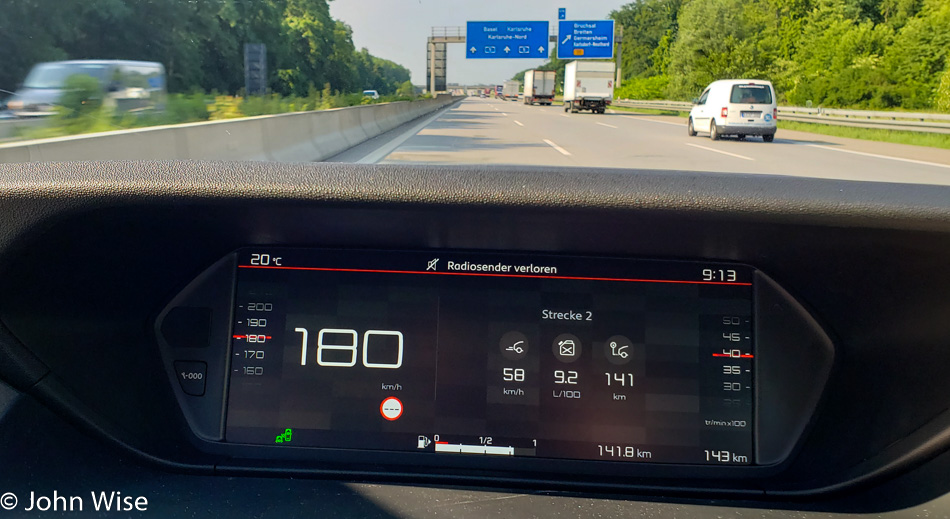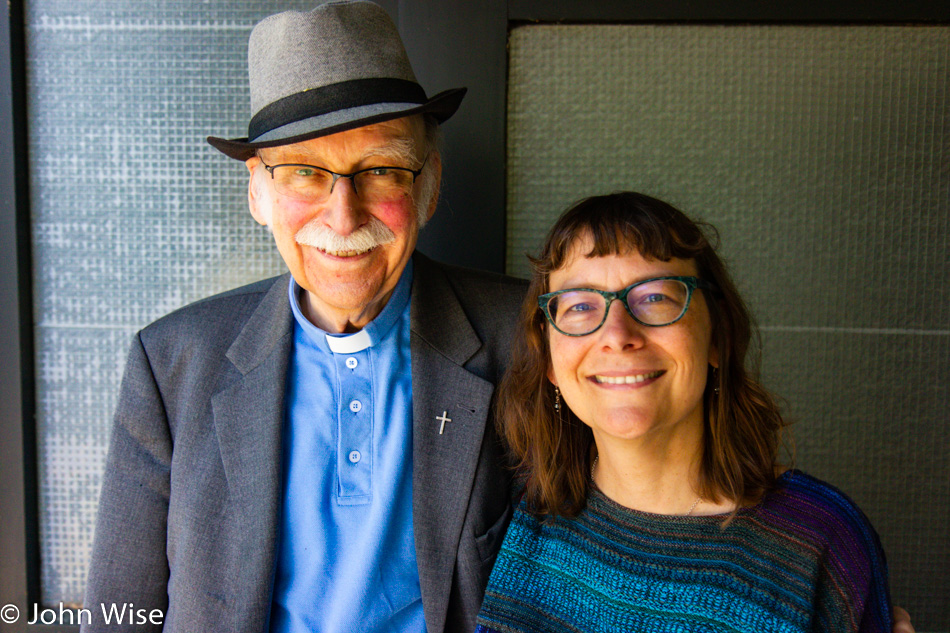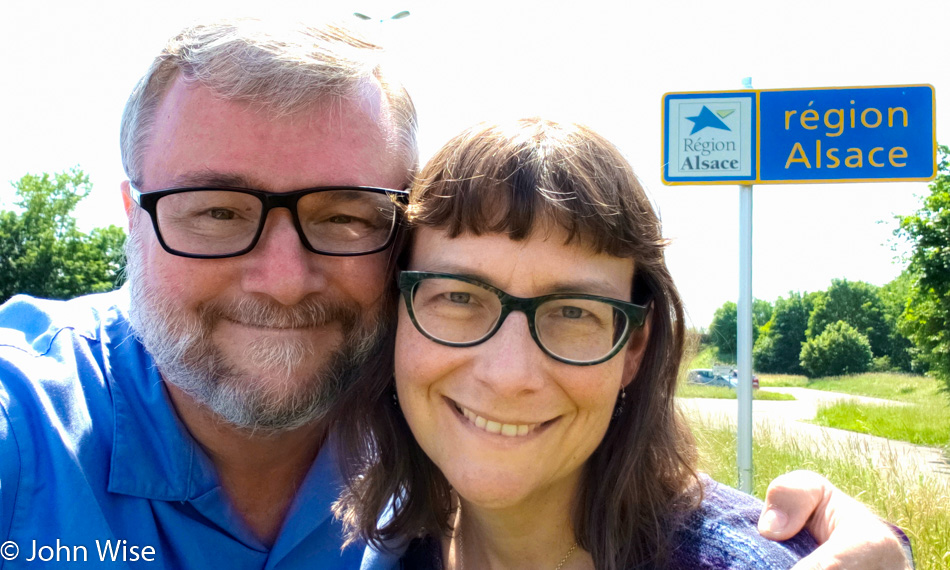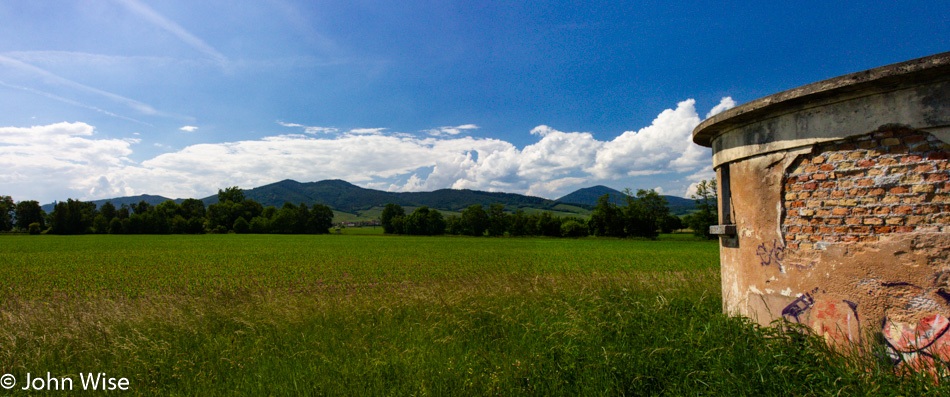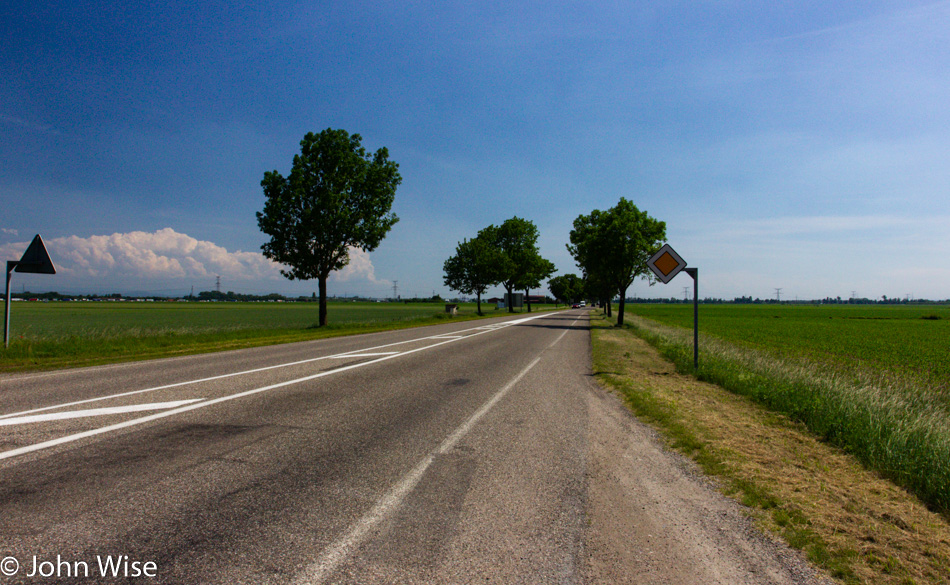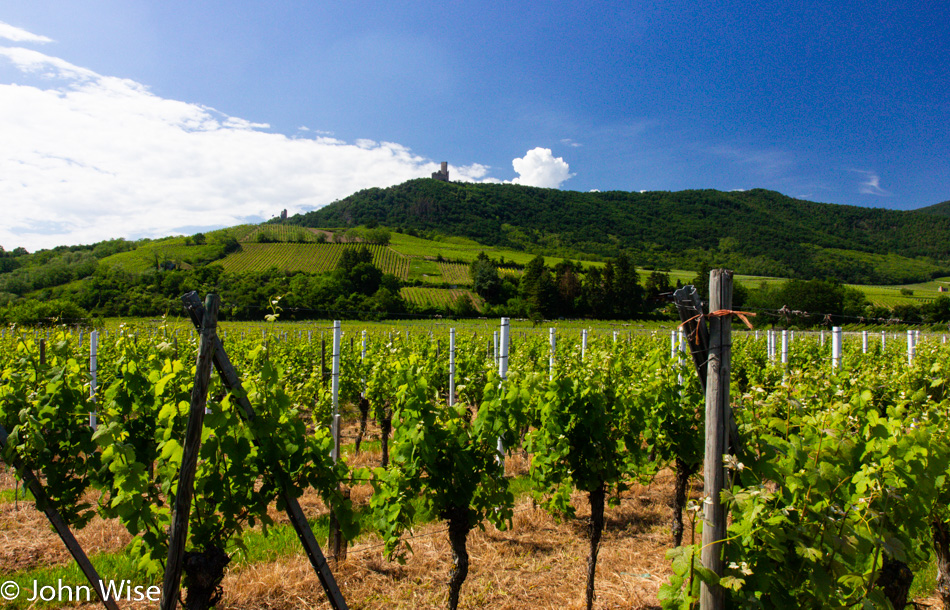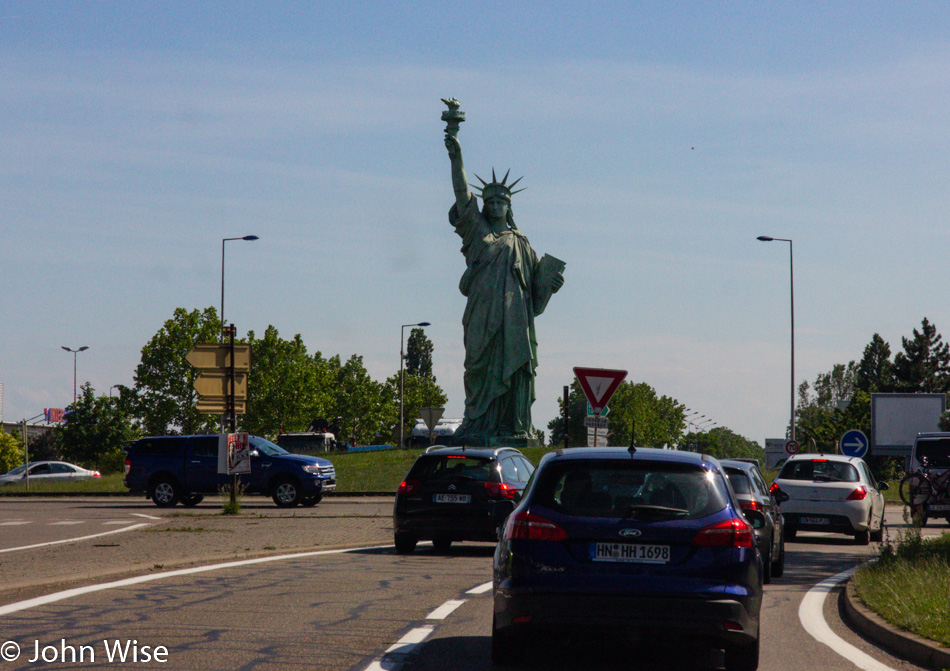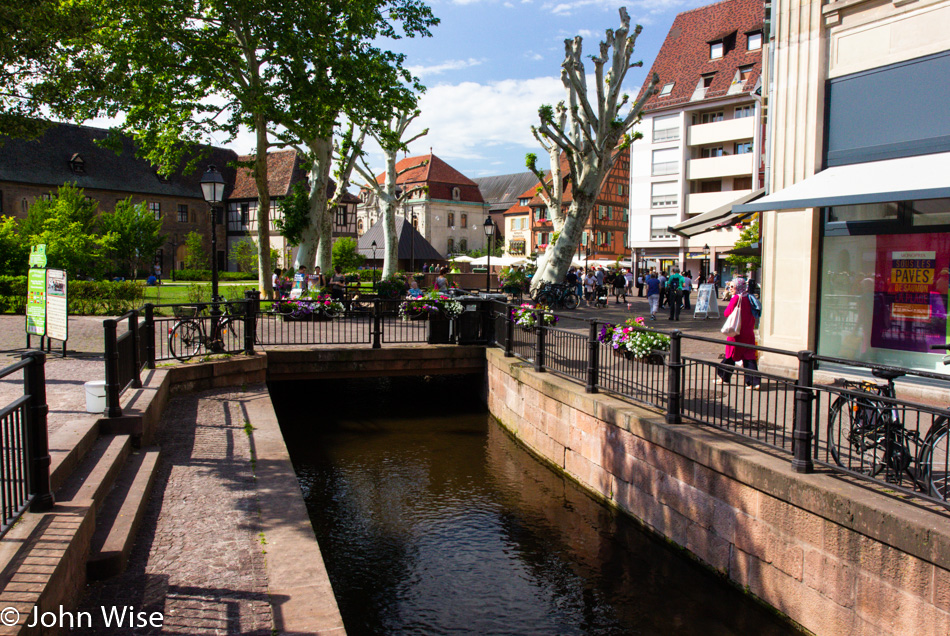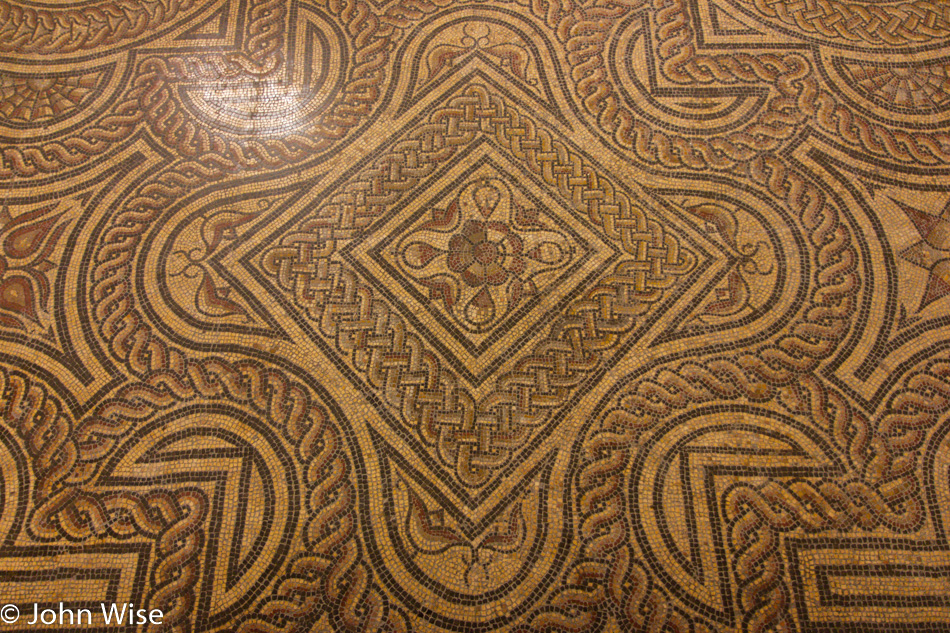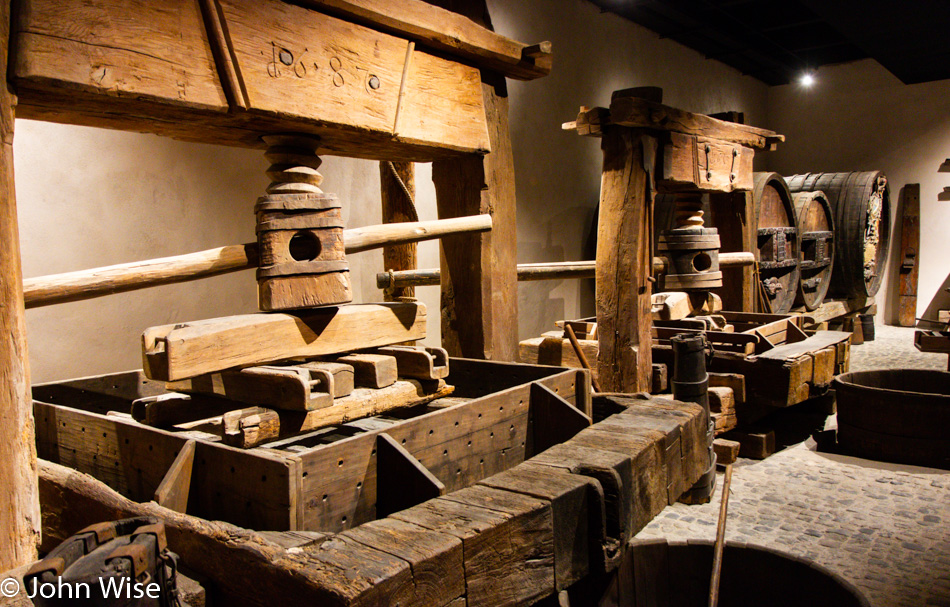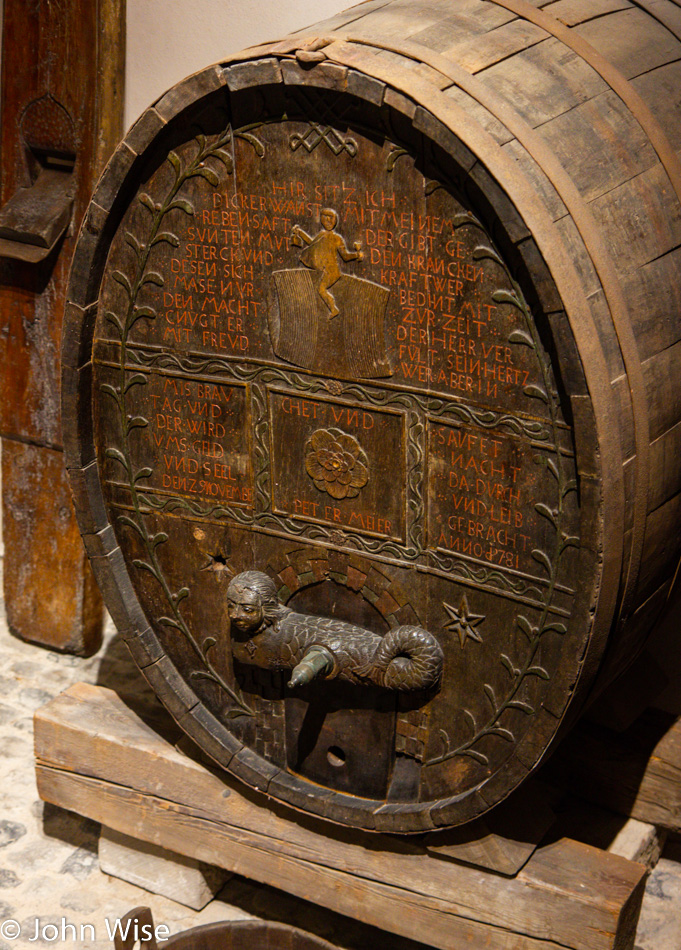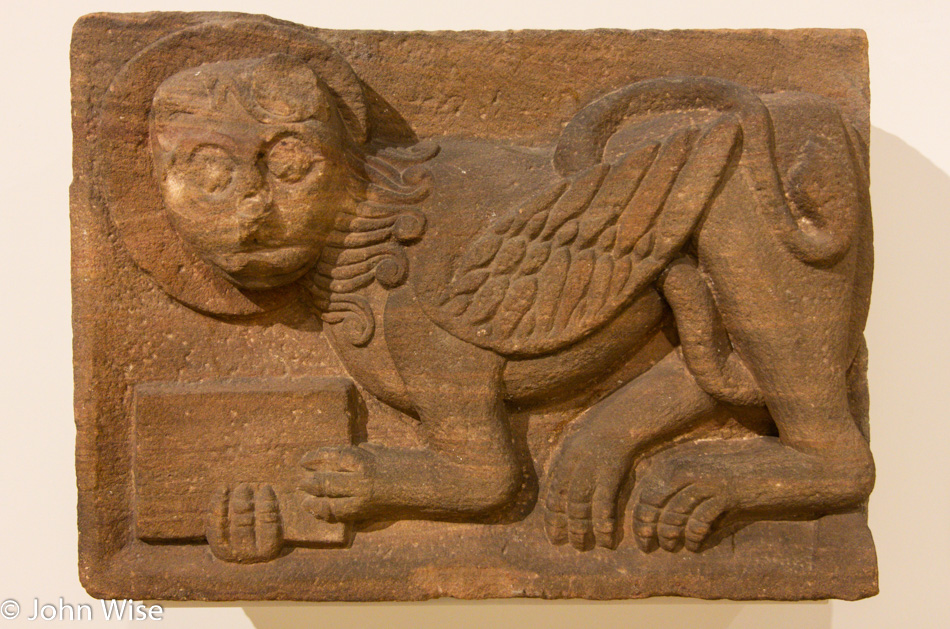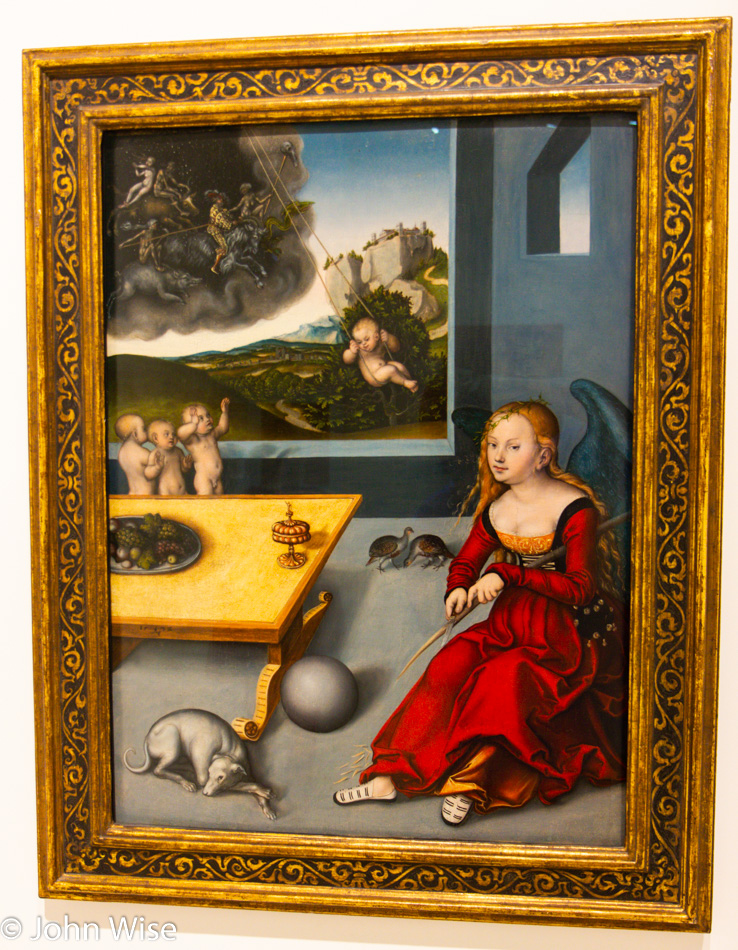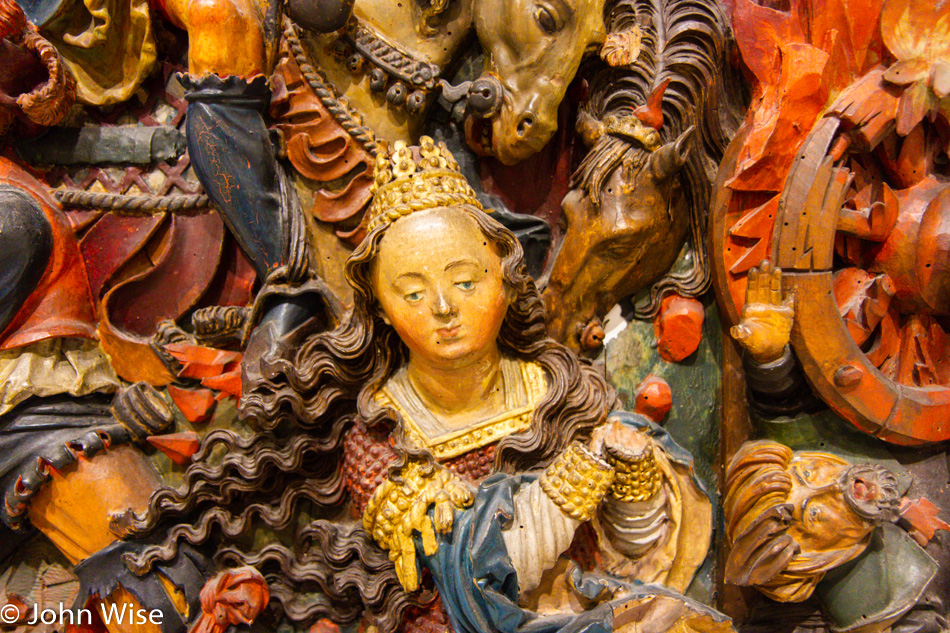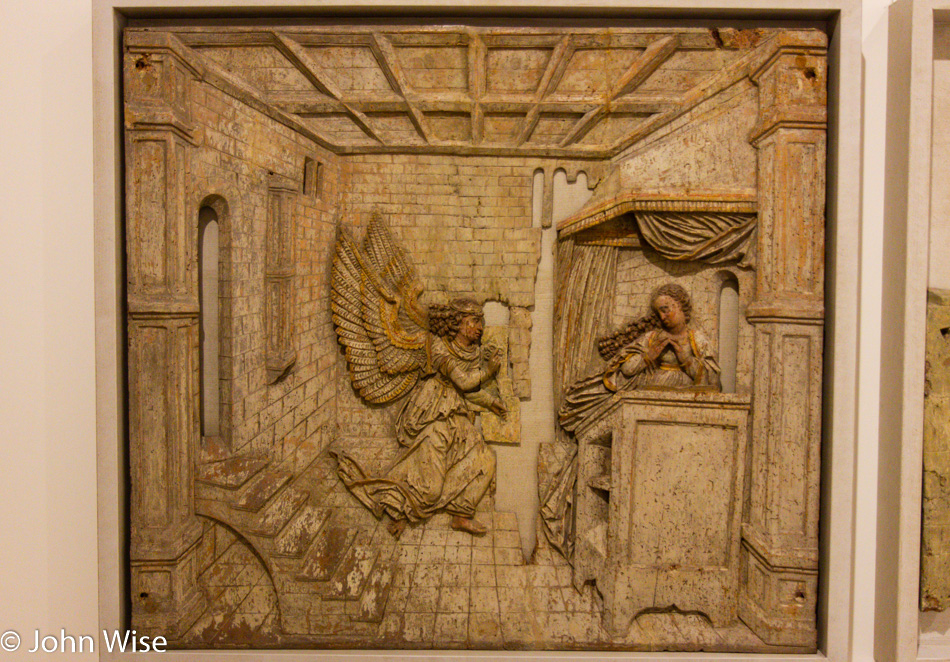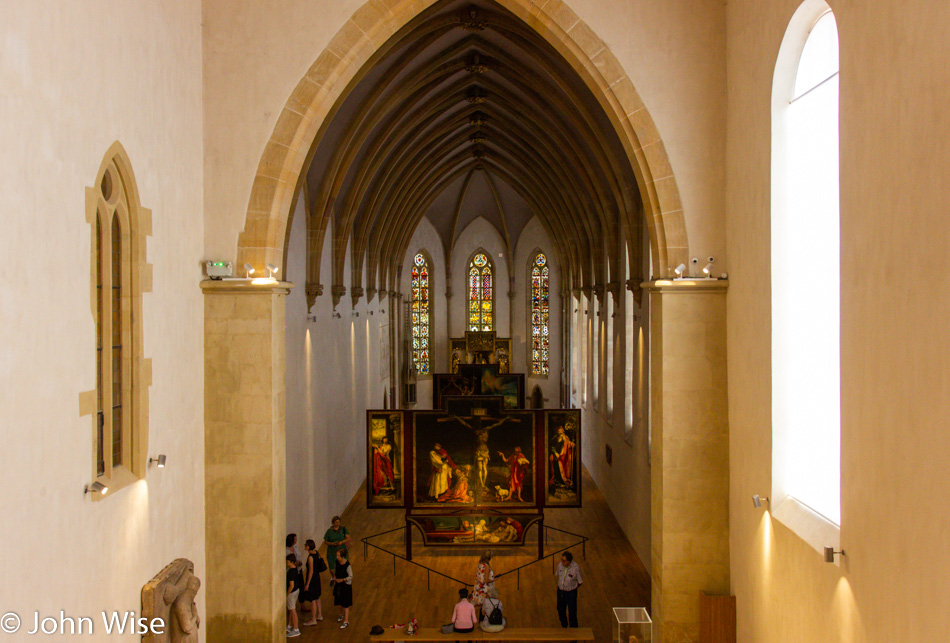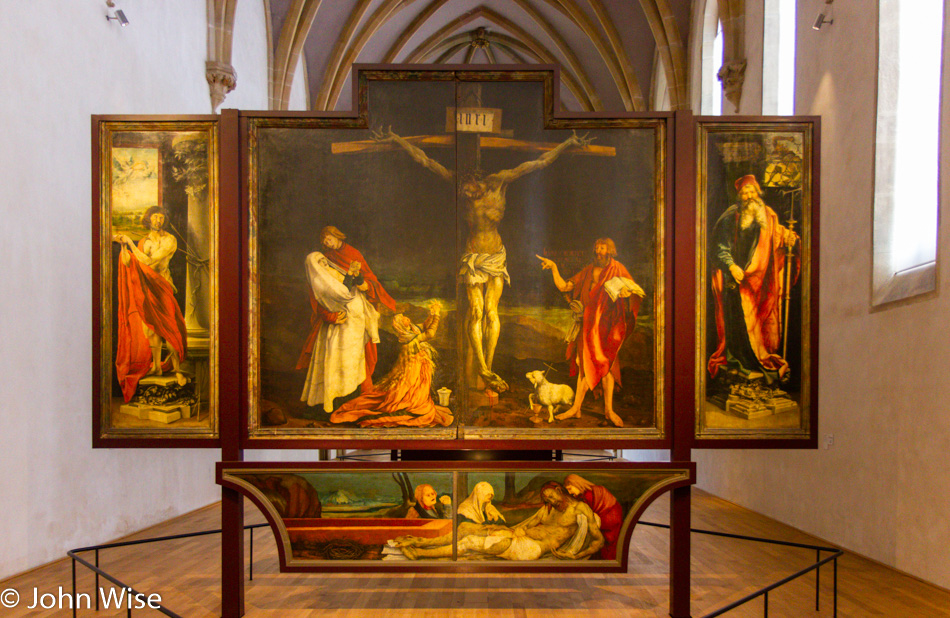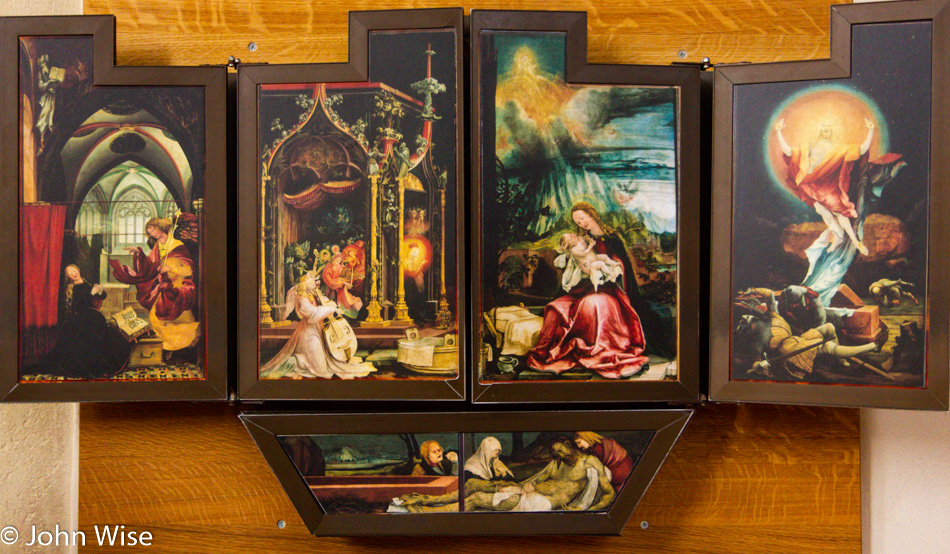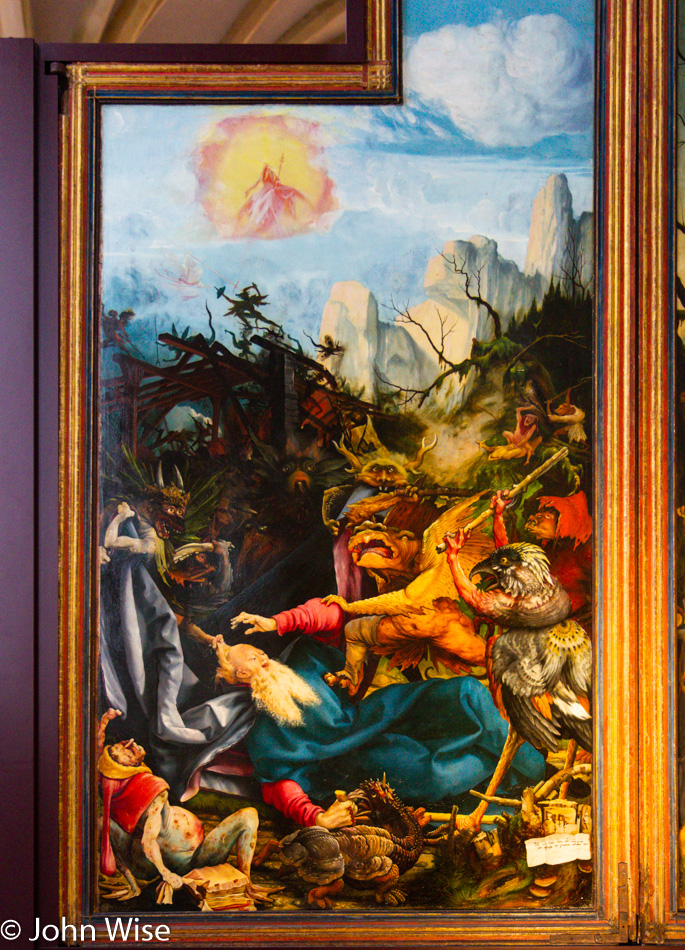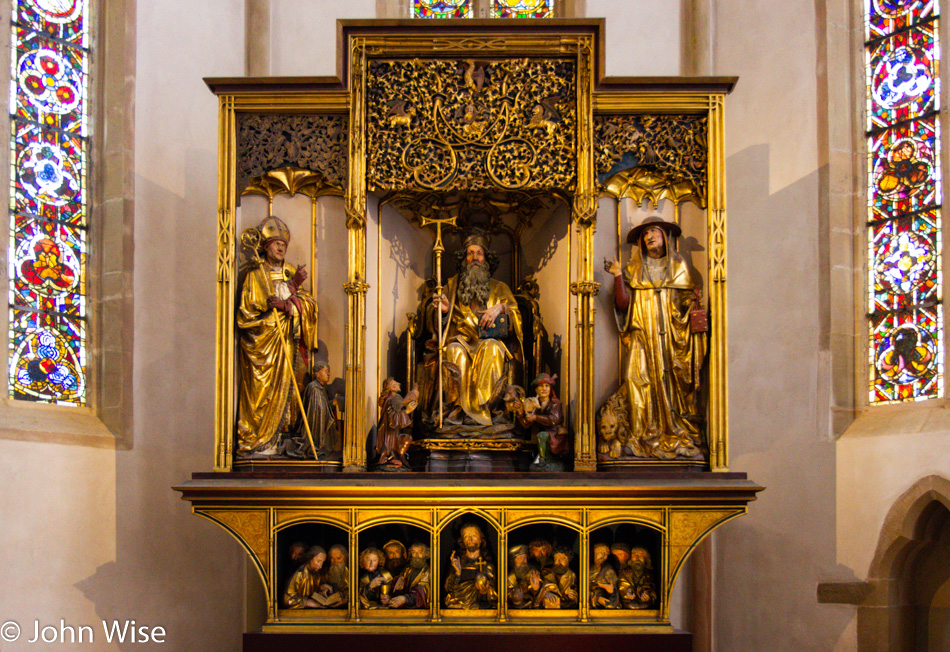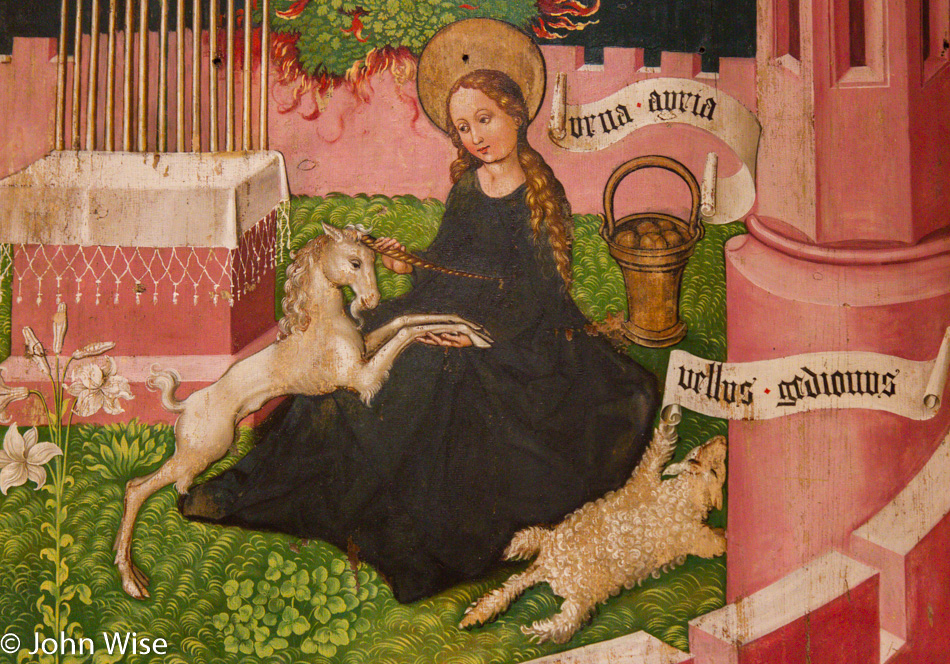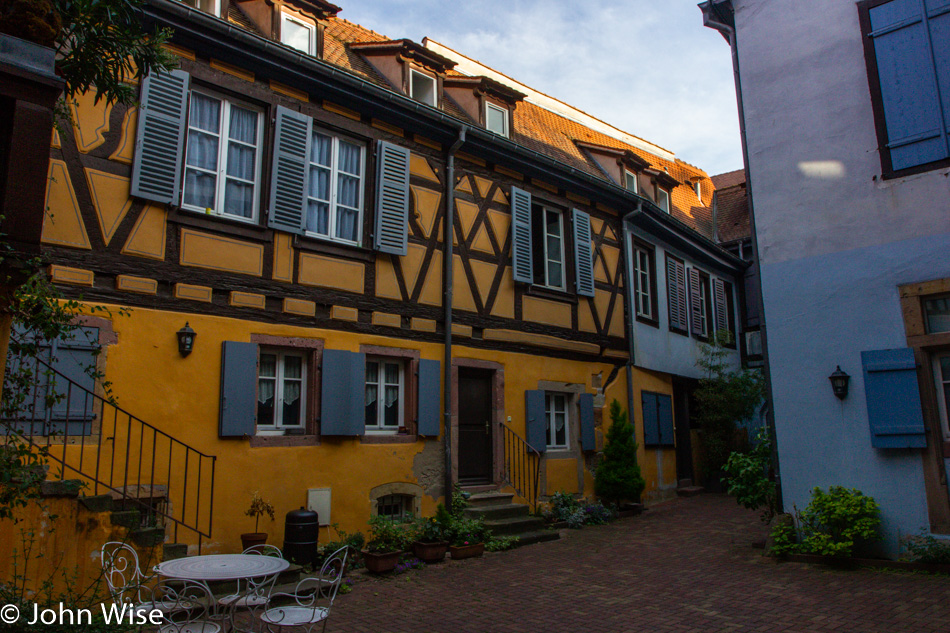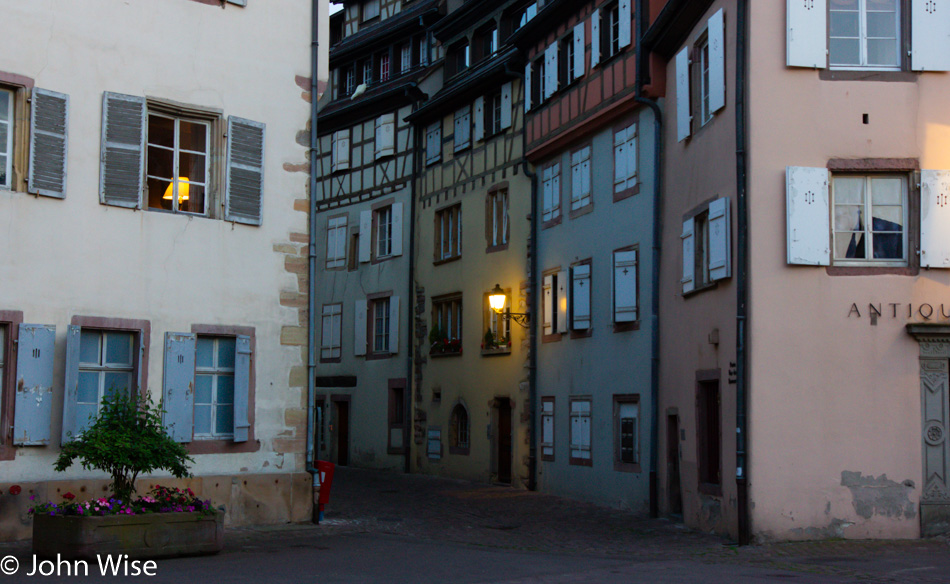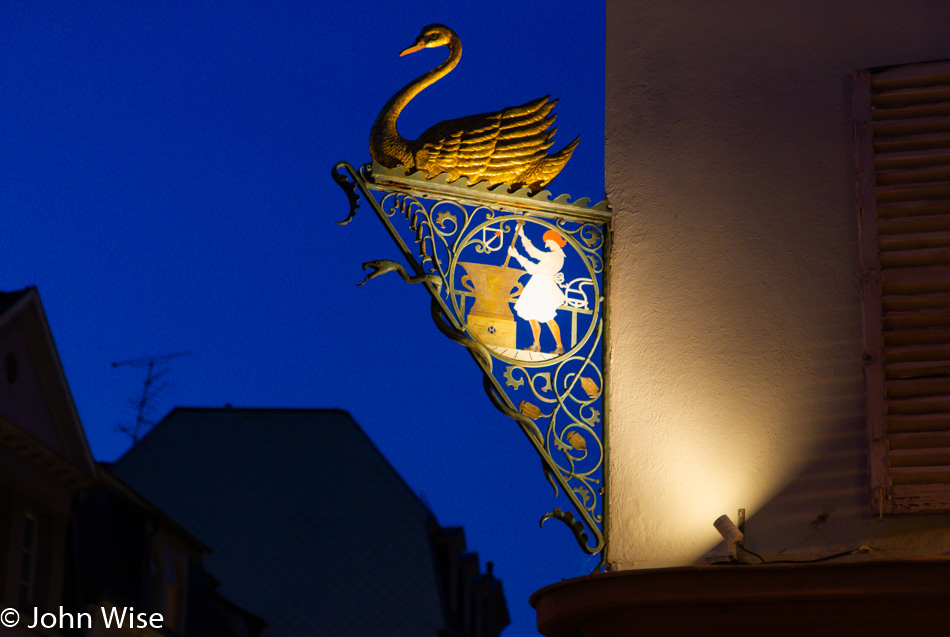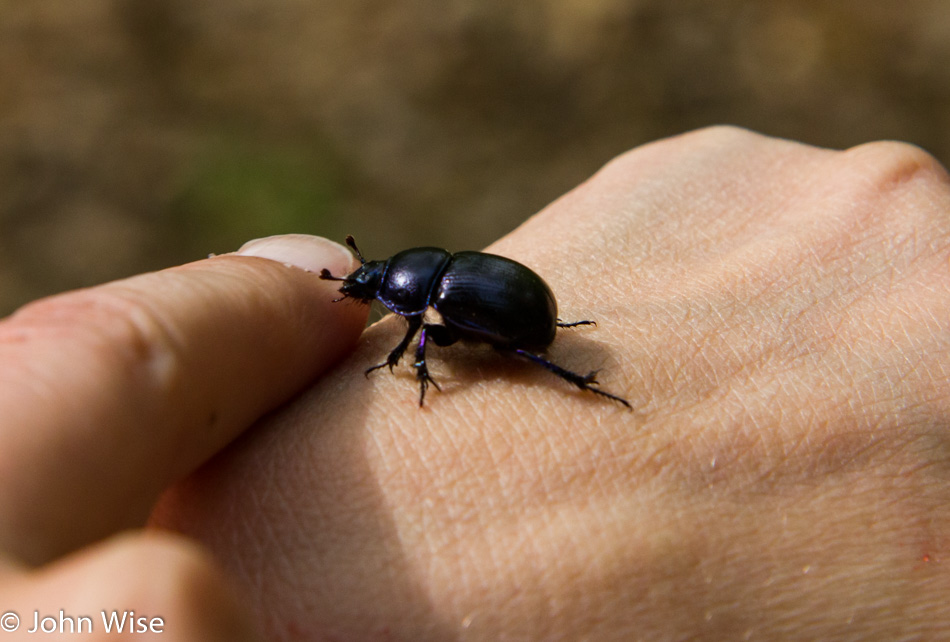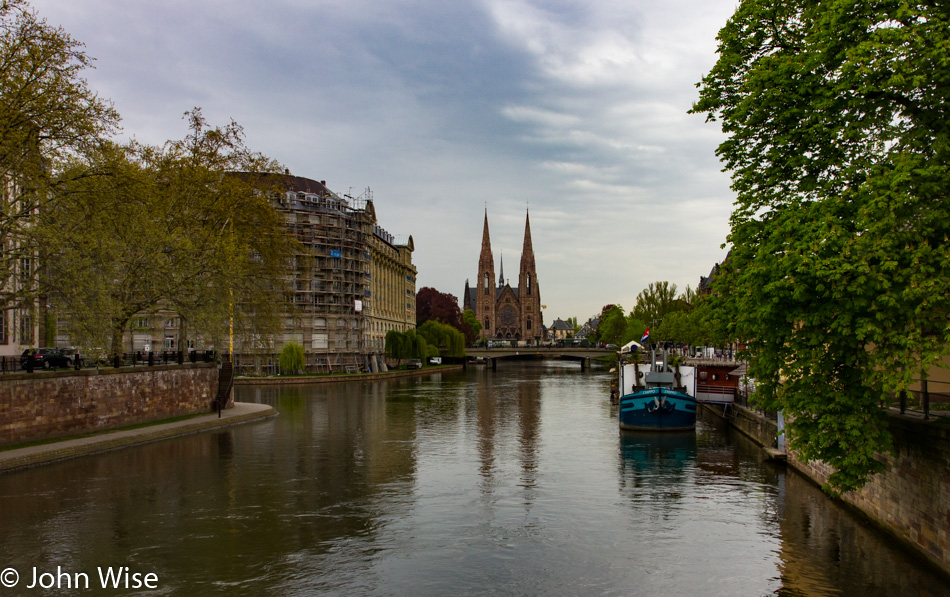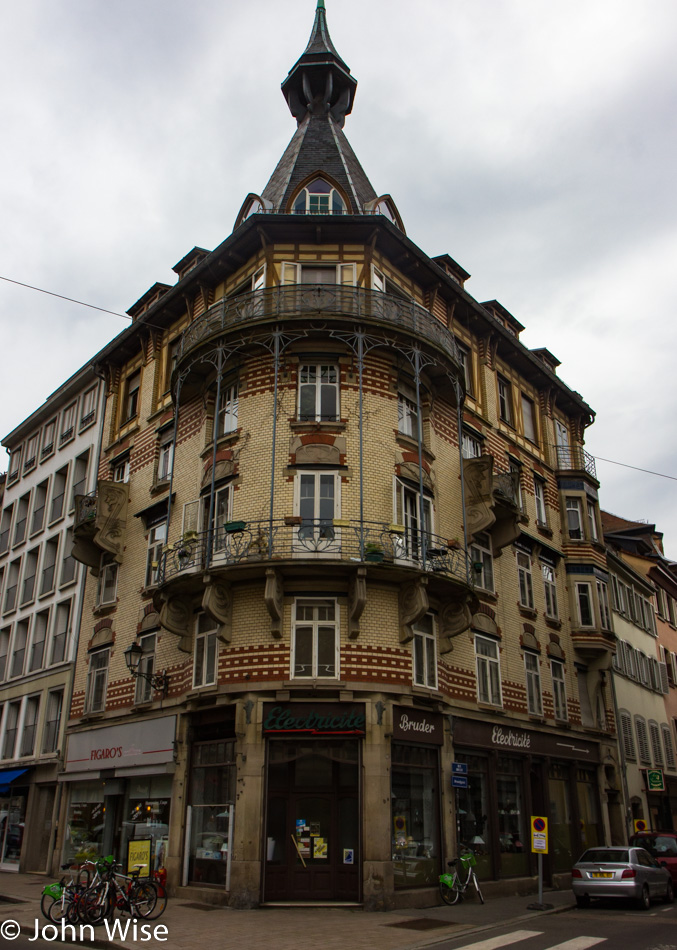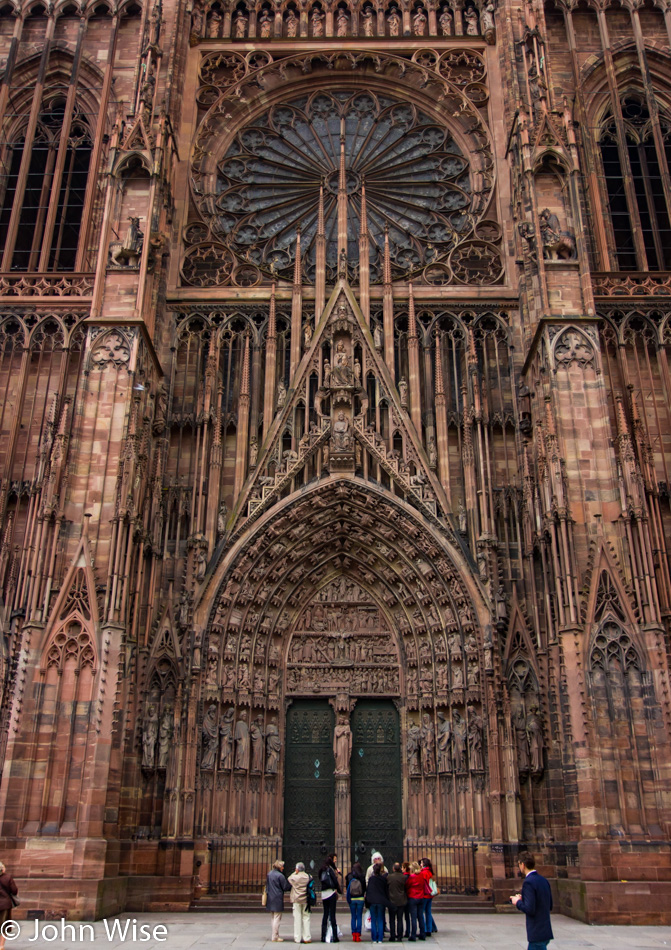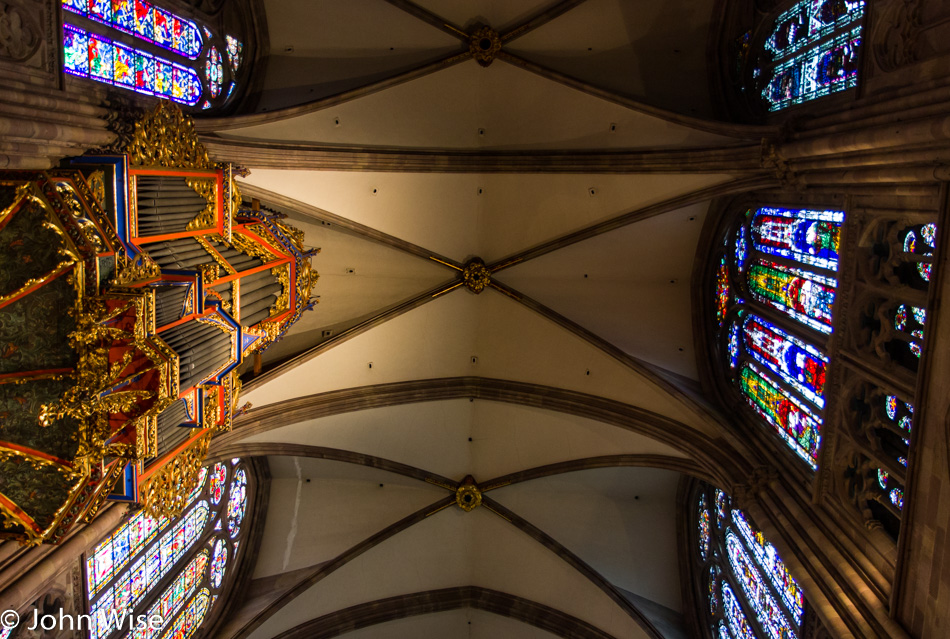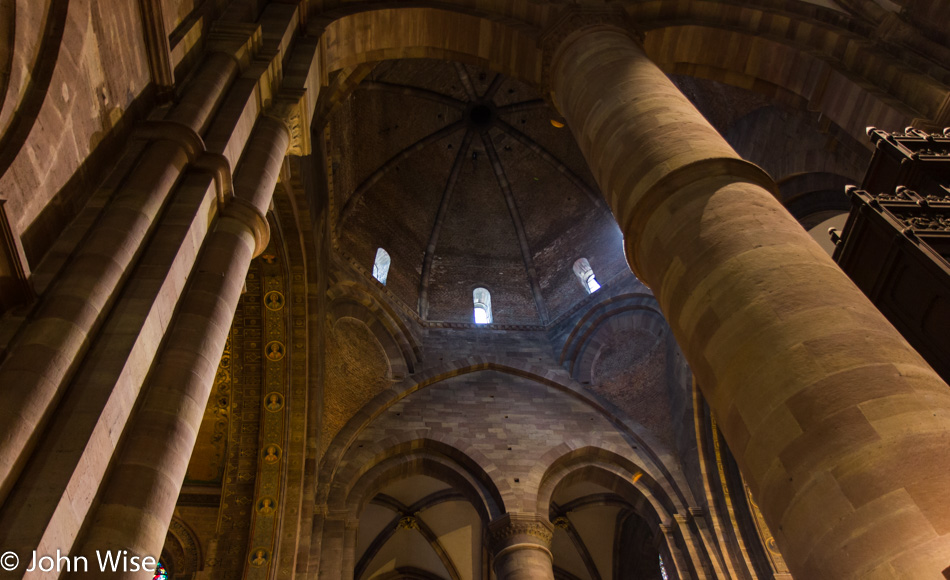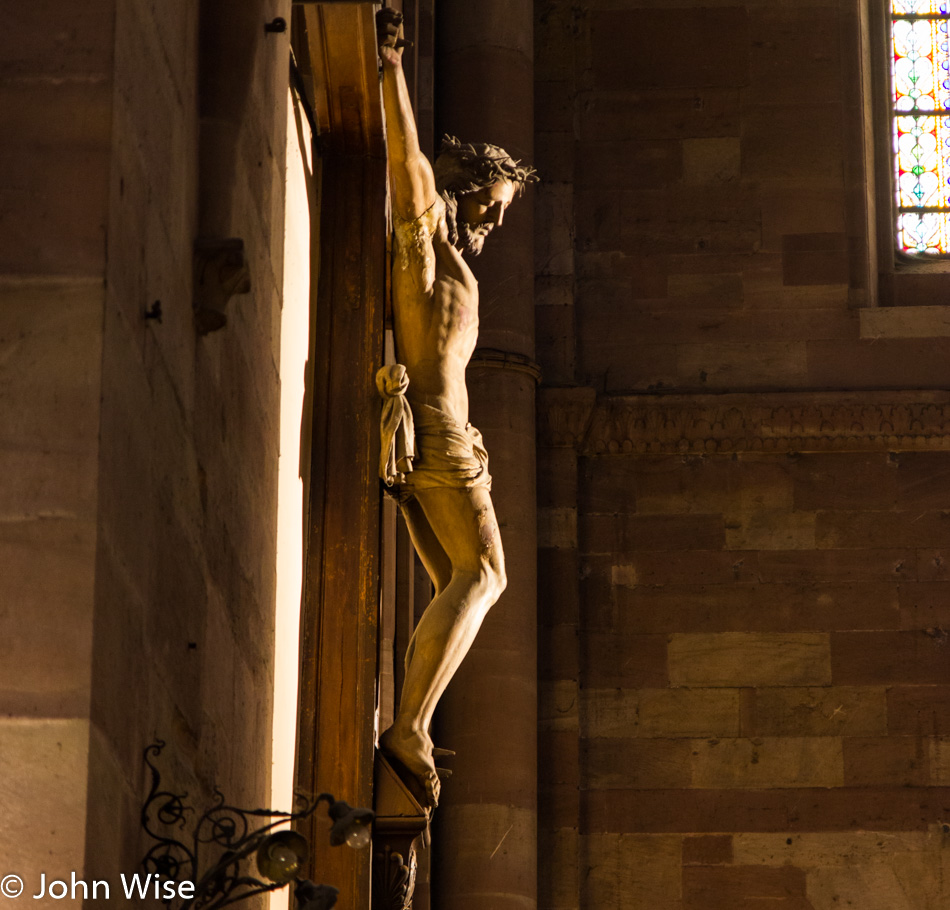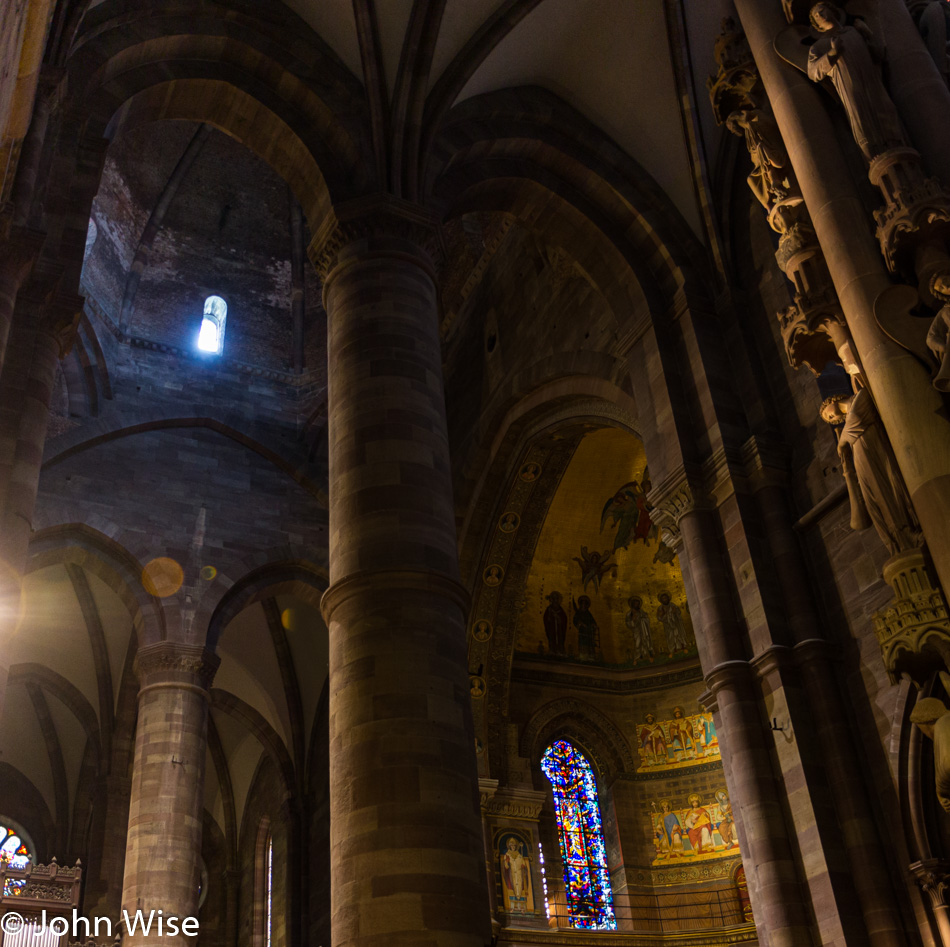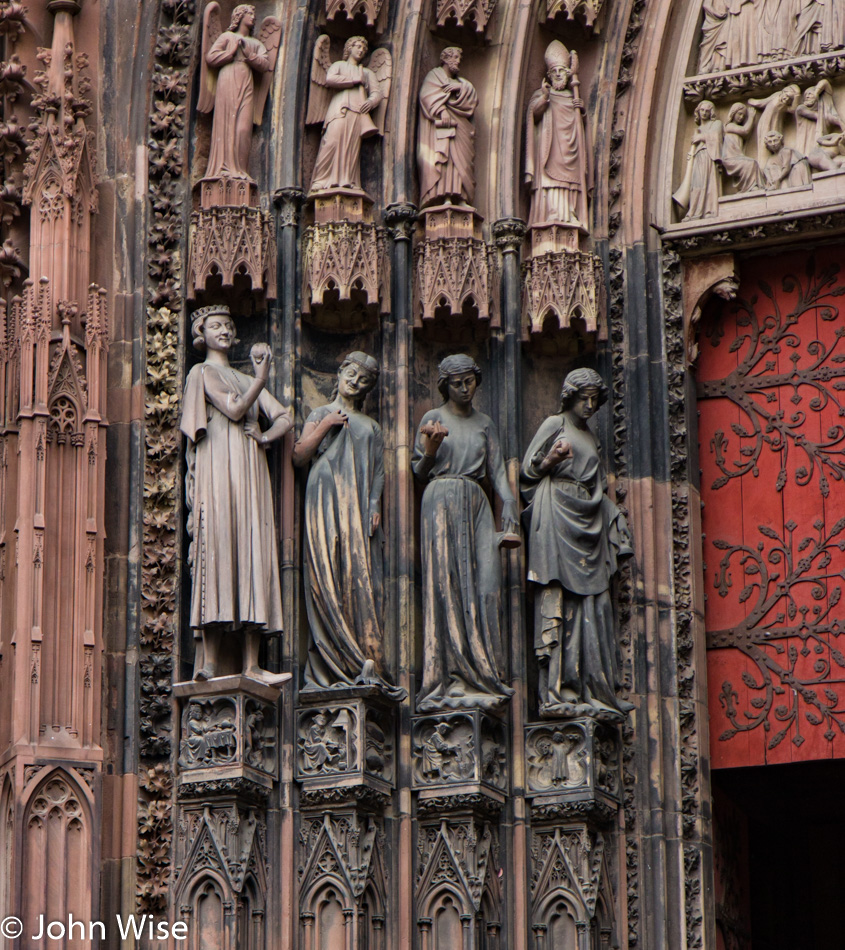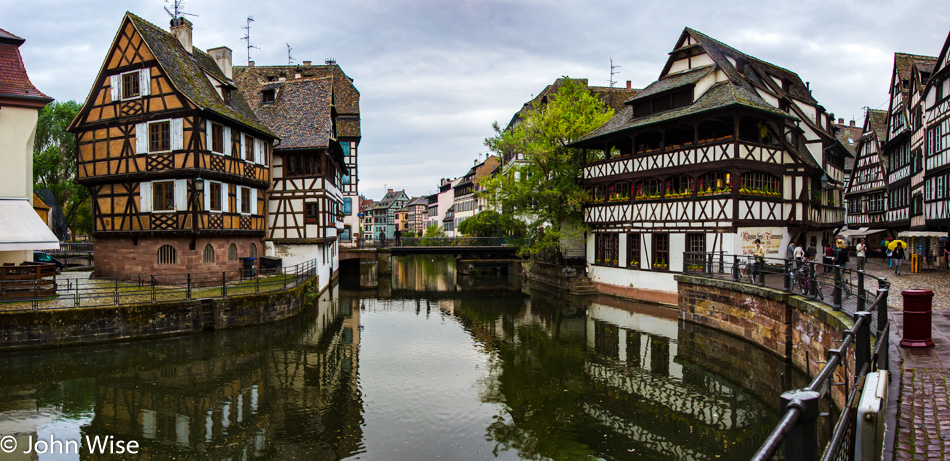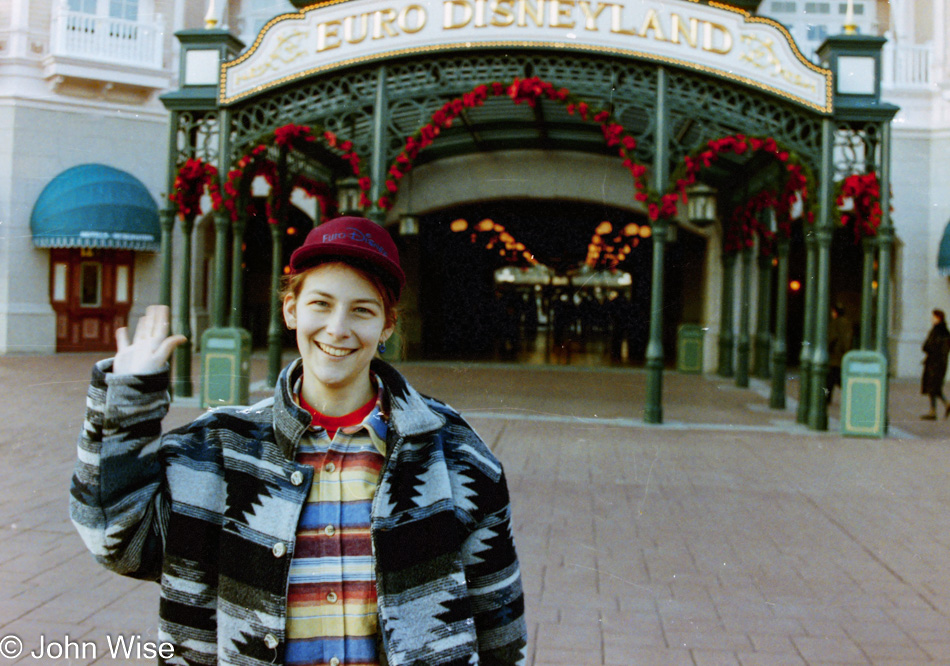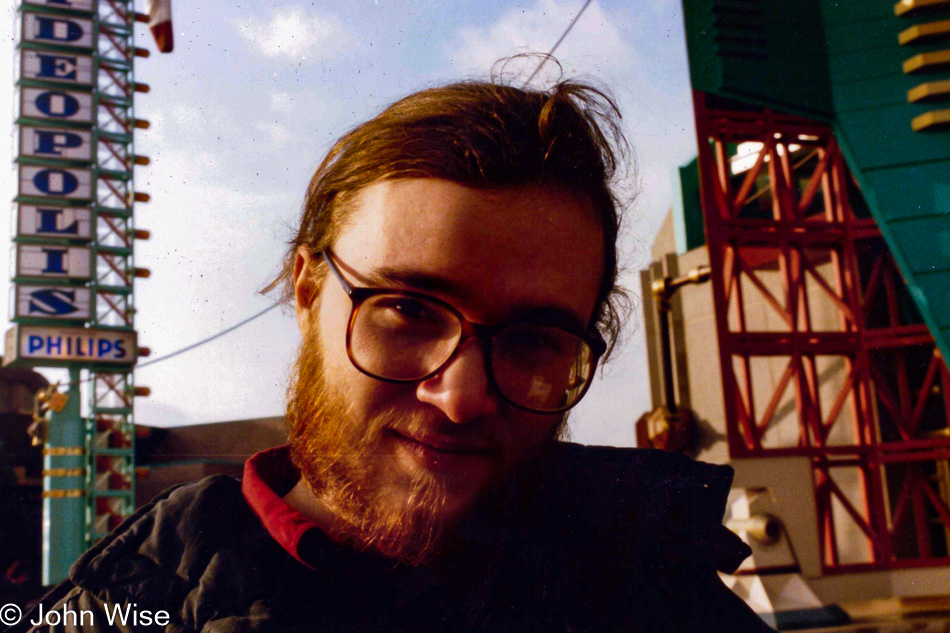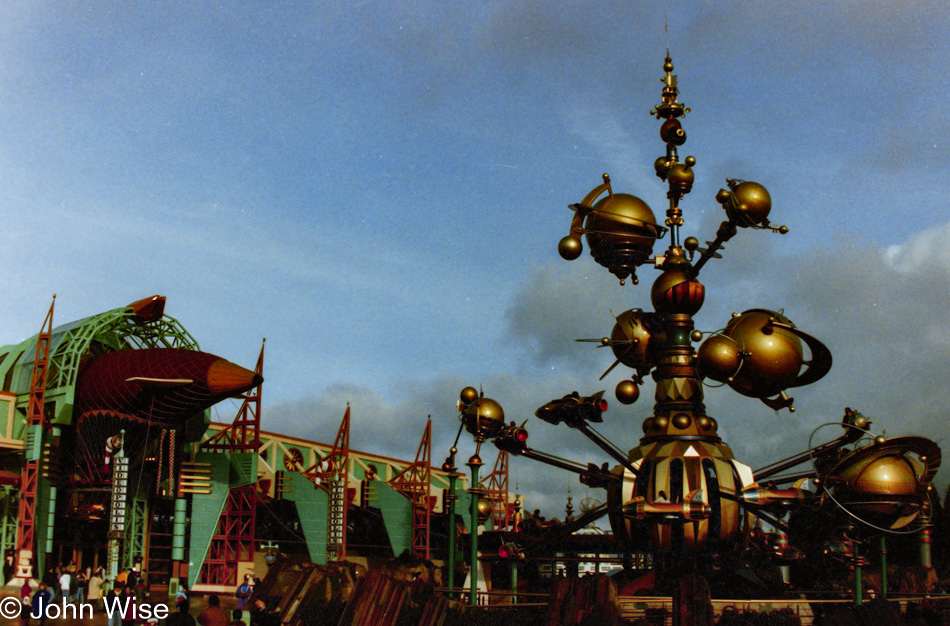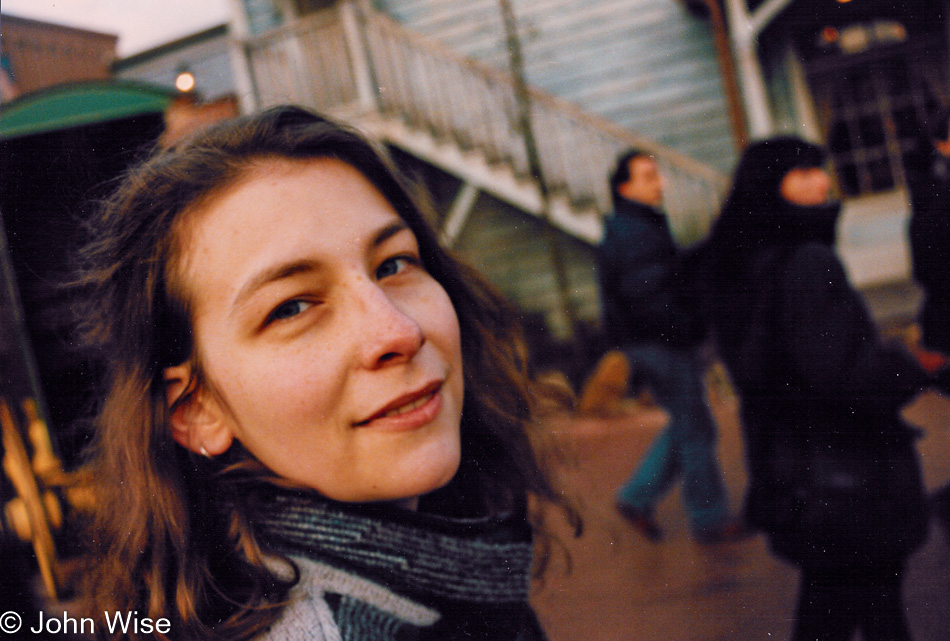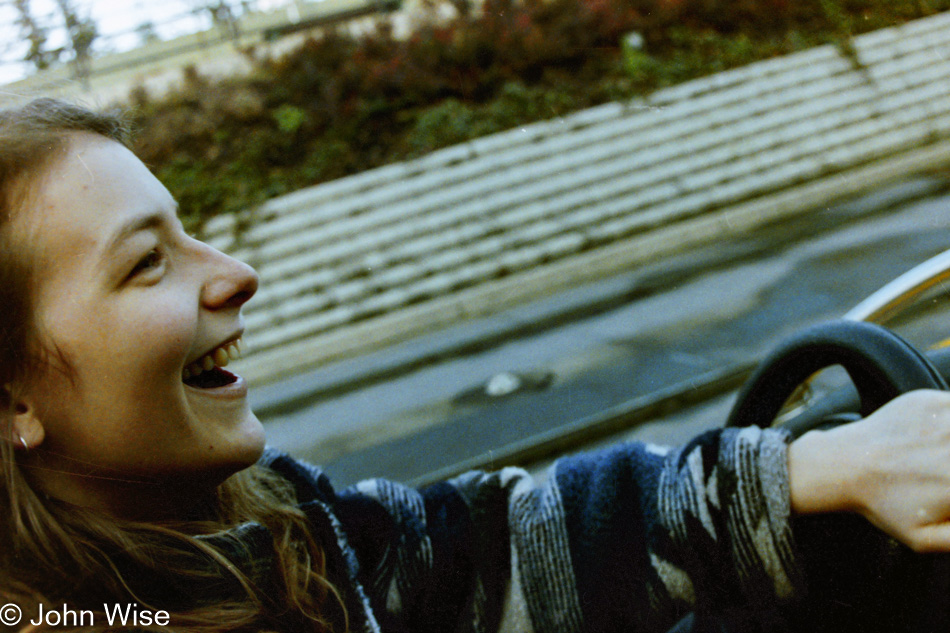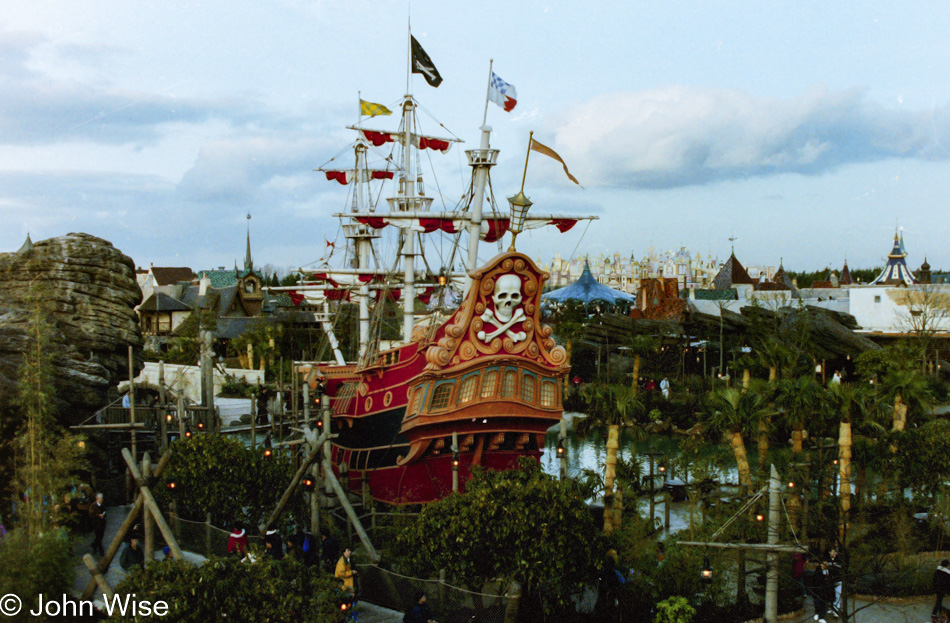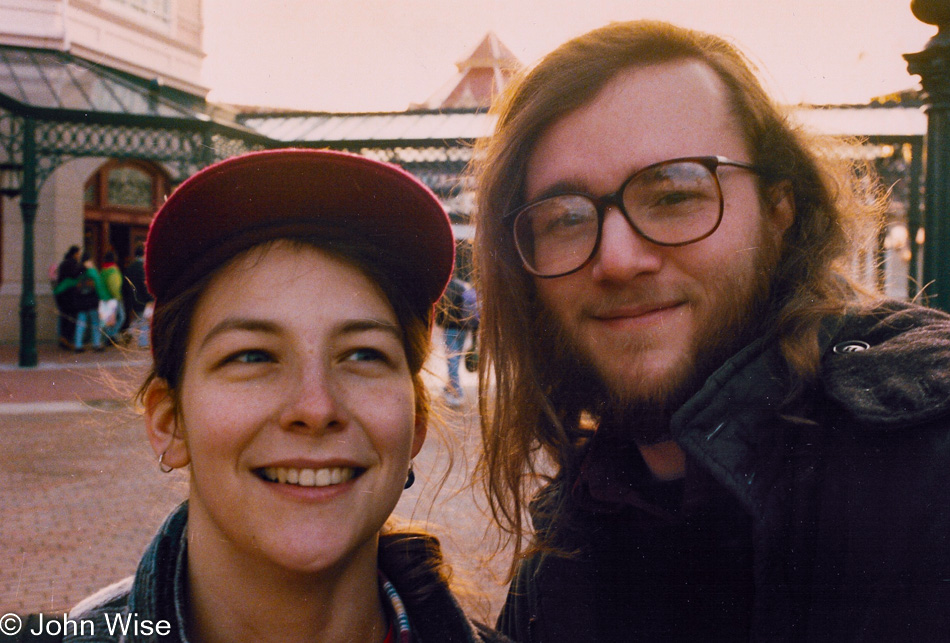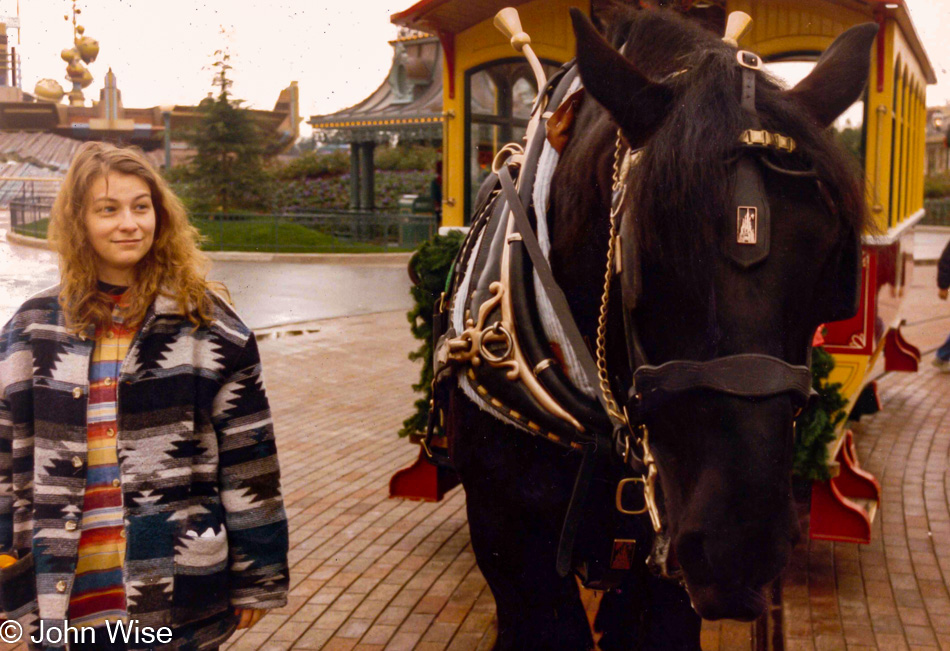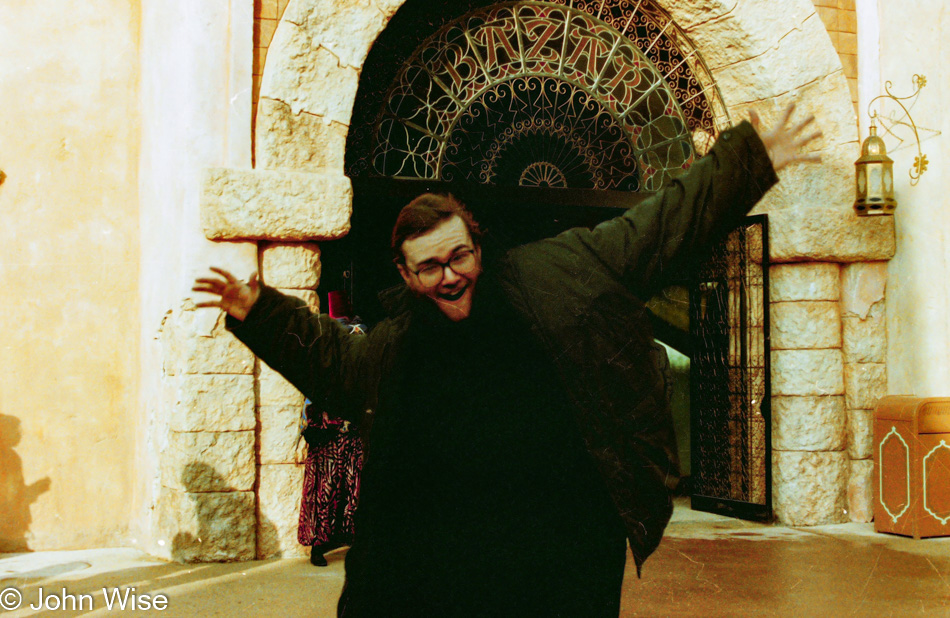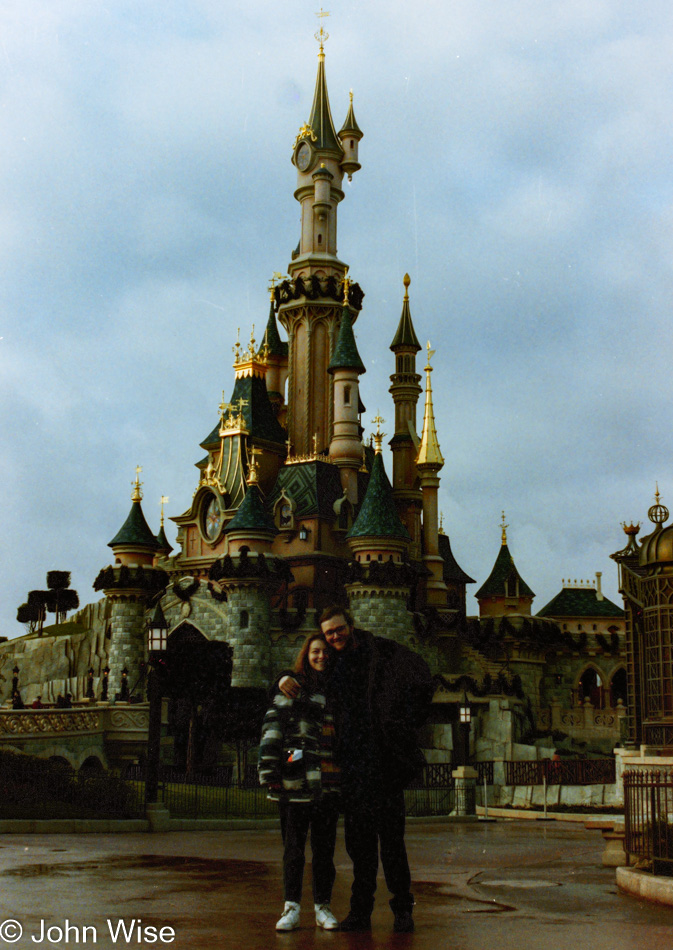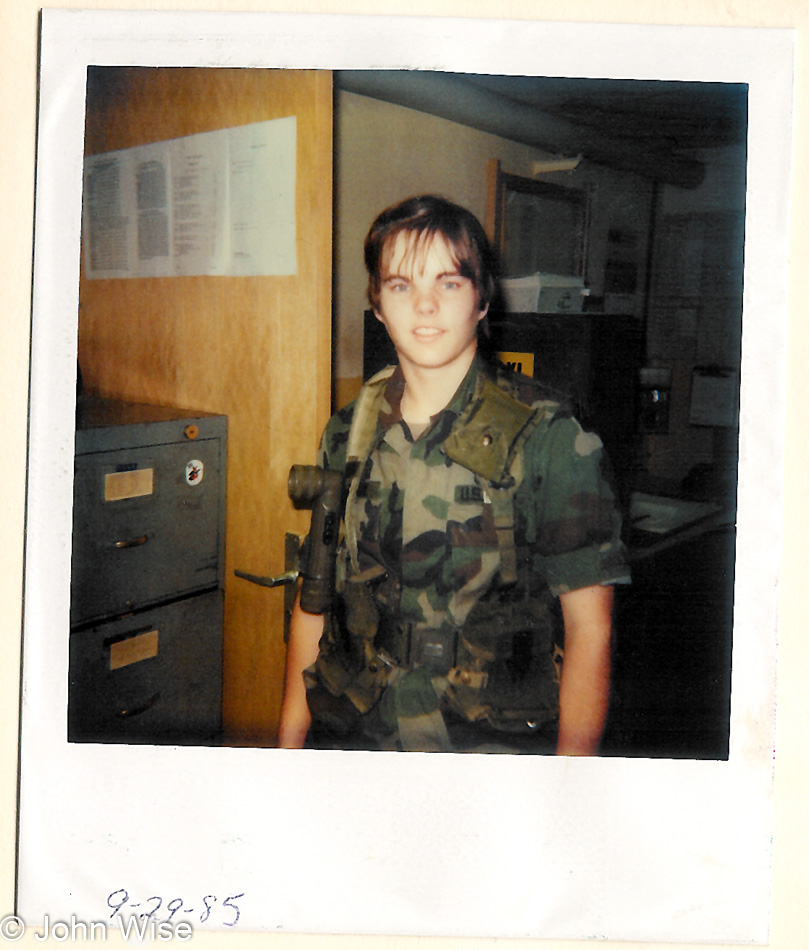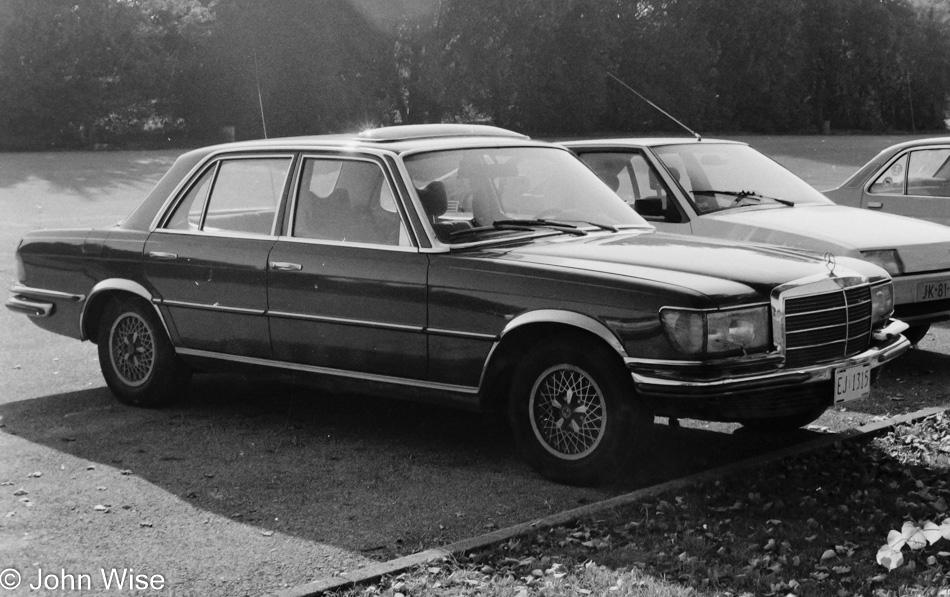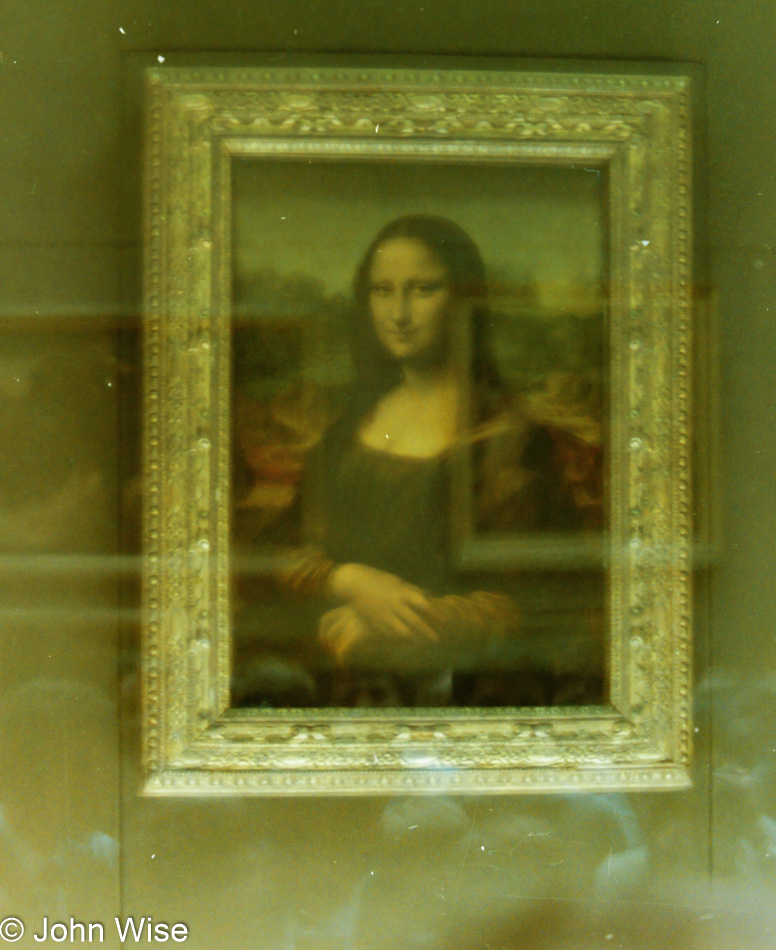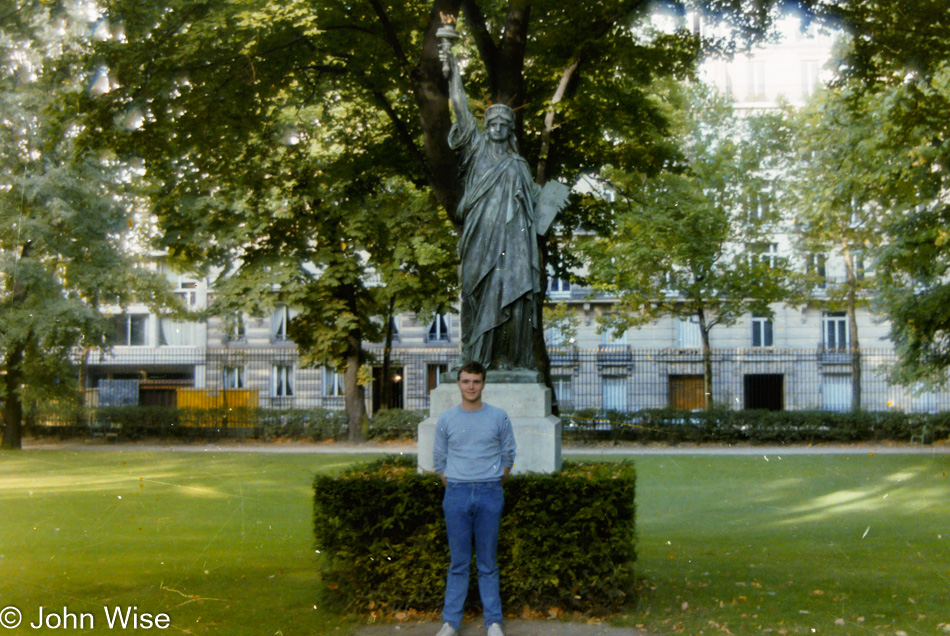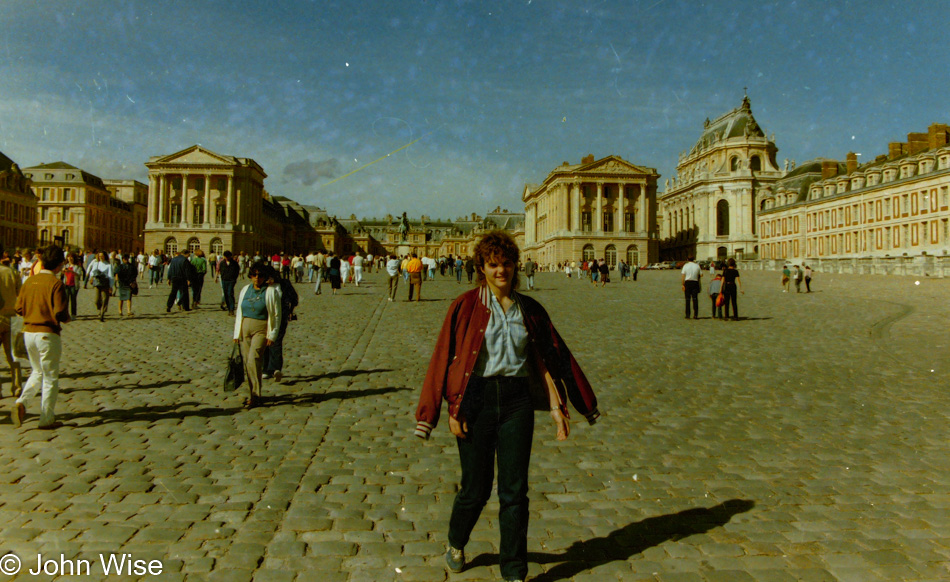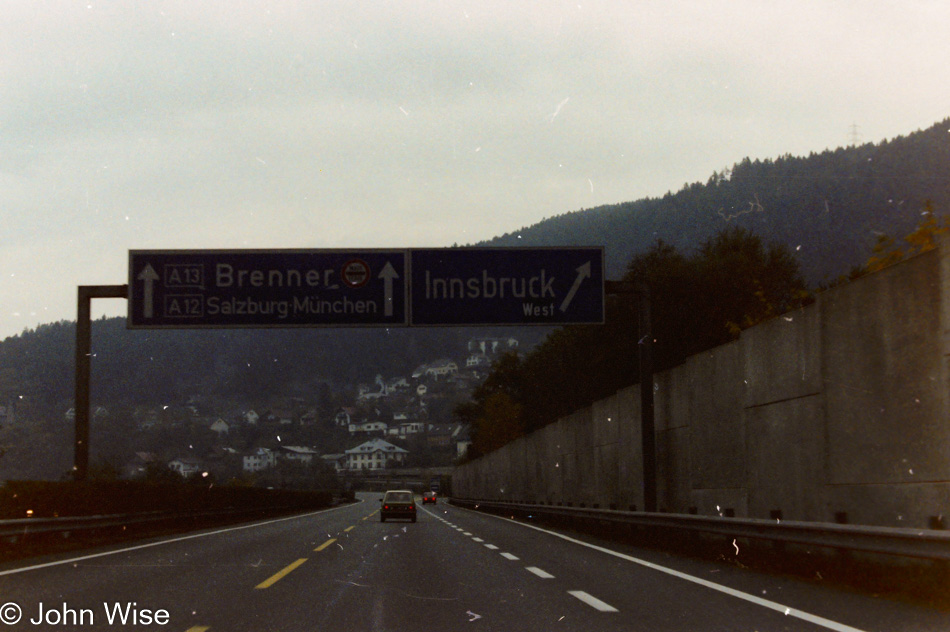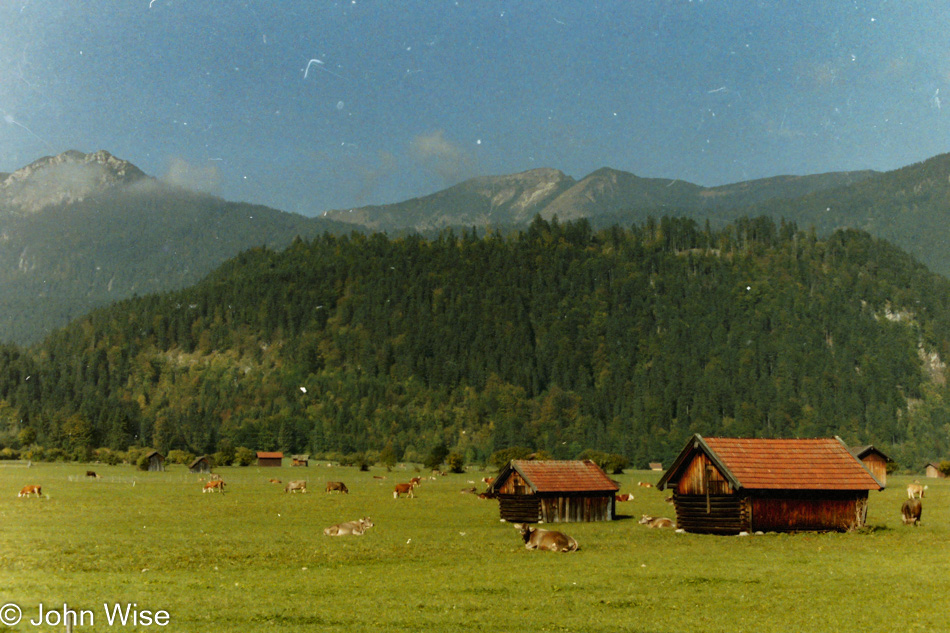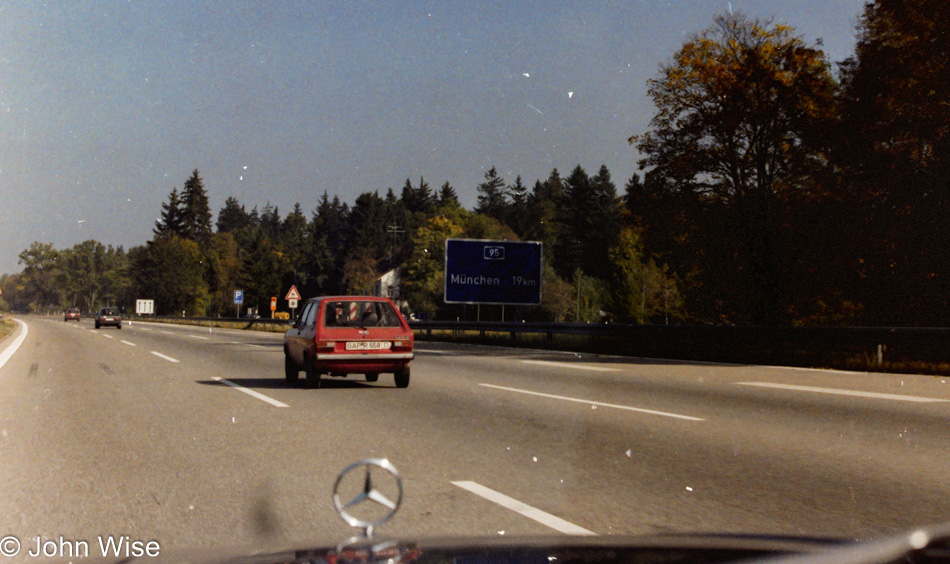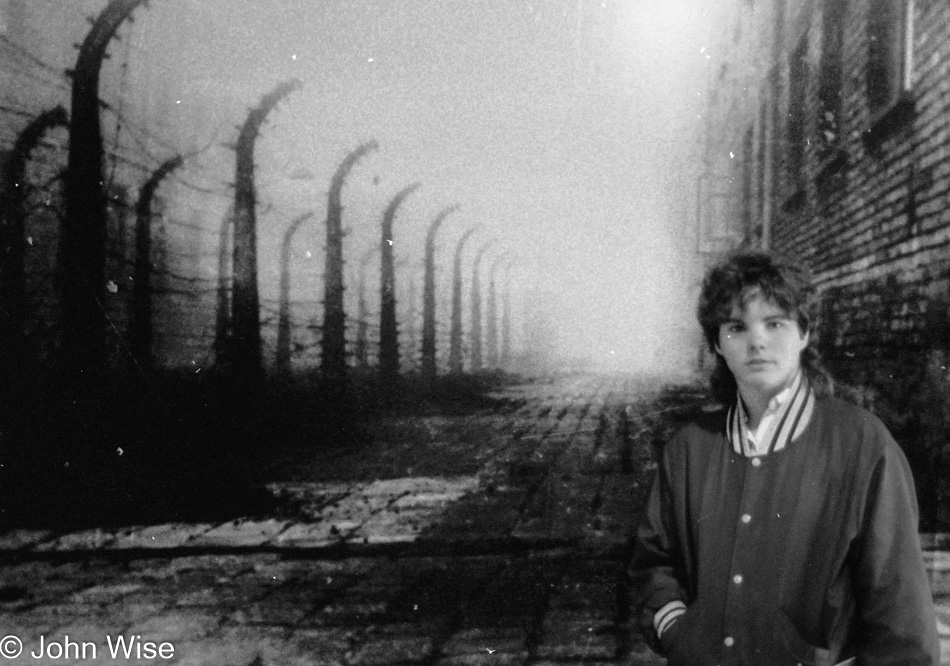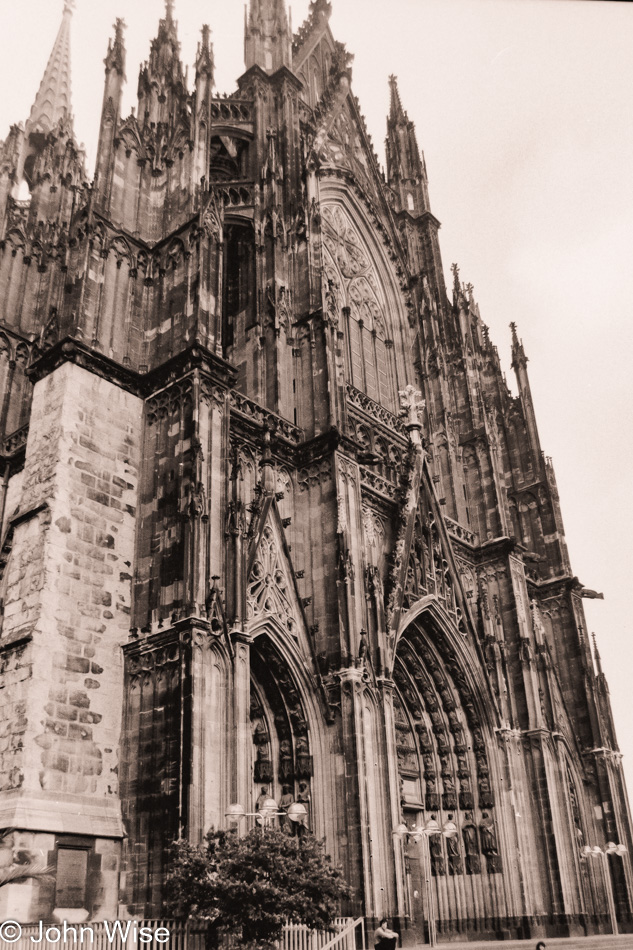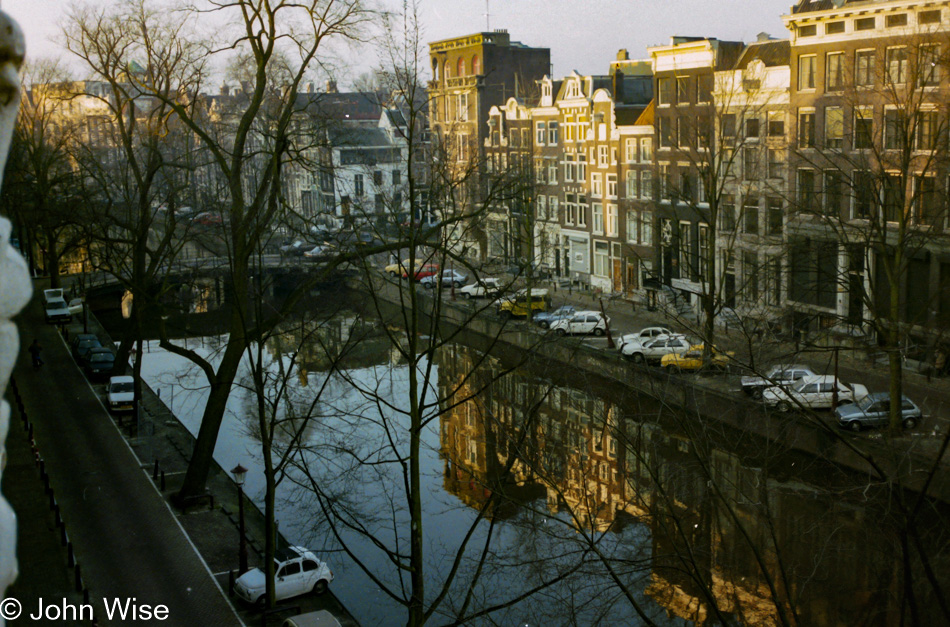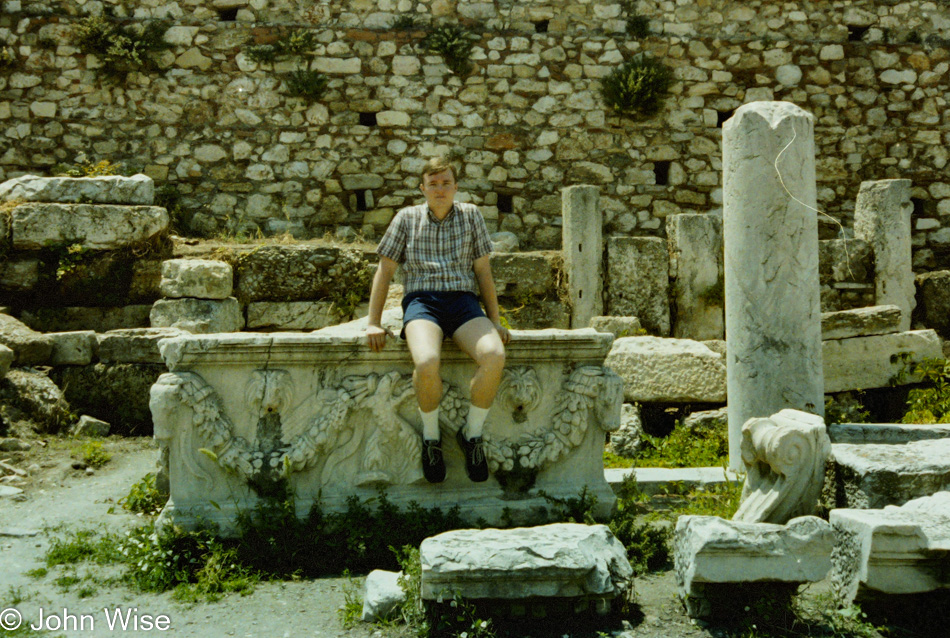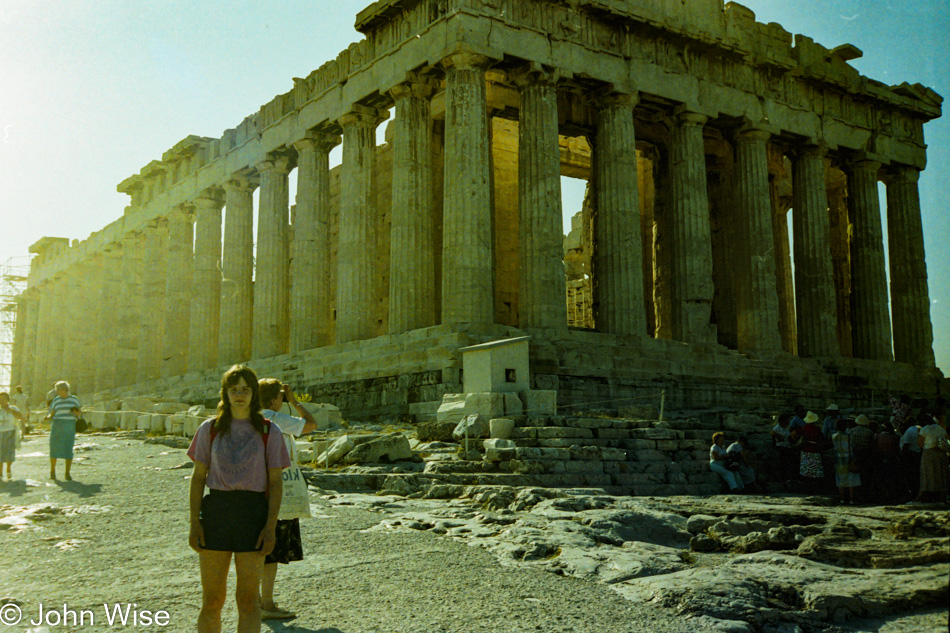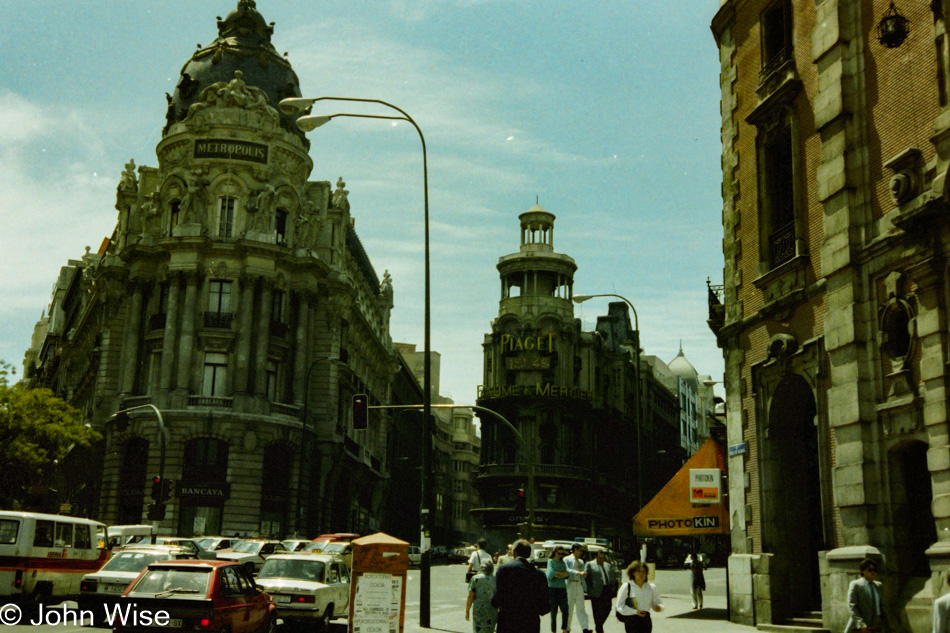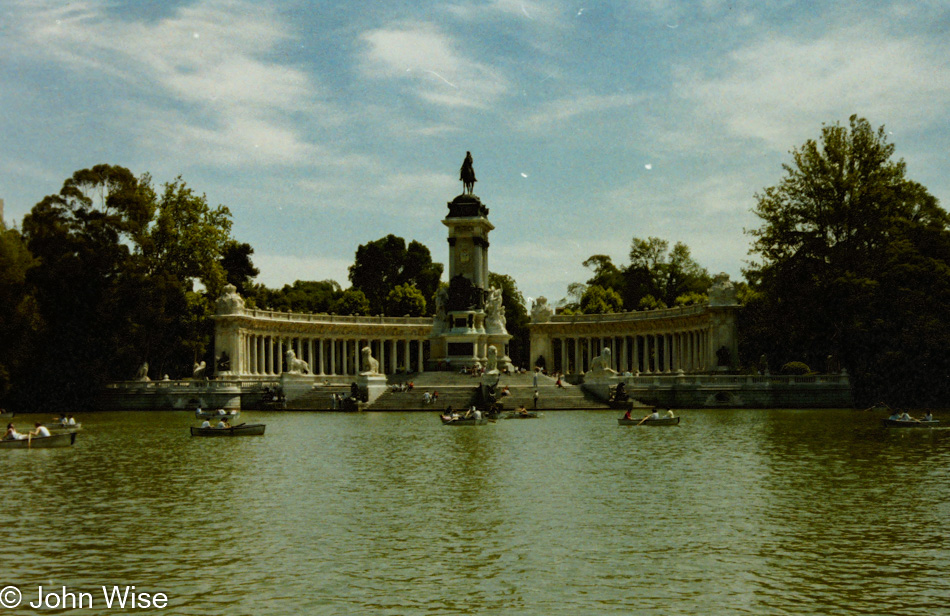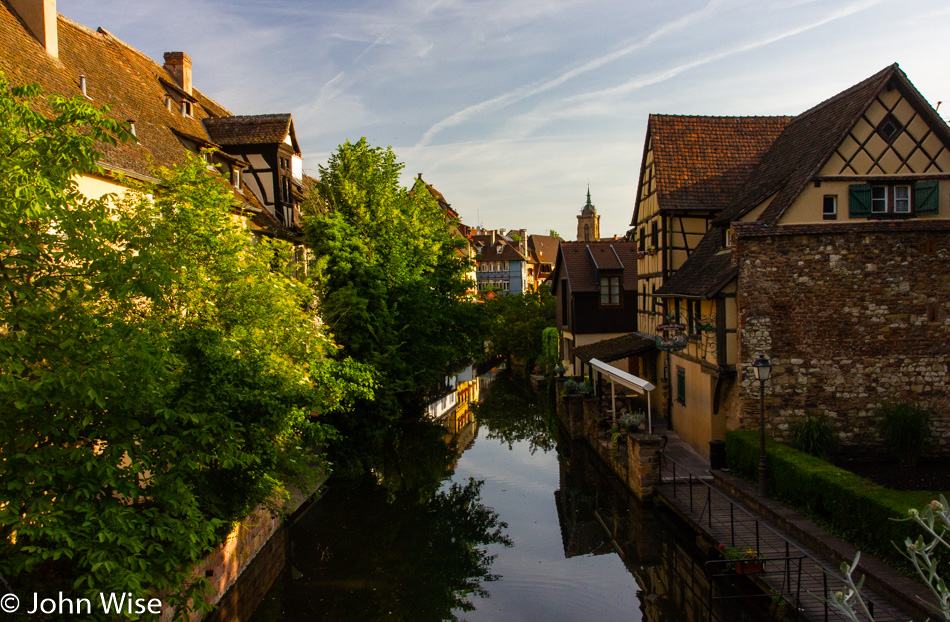
That old thing called weather looks cooperative, but it’s still late spring, so we are “prepared” for a turn at any moment. These views are why travelers and tourists flock to this area. Being out here early, we nearly have the place to ourselves.
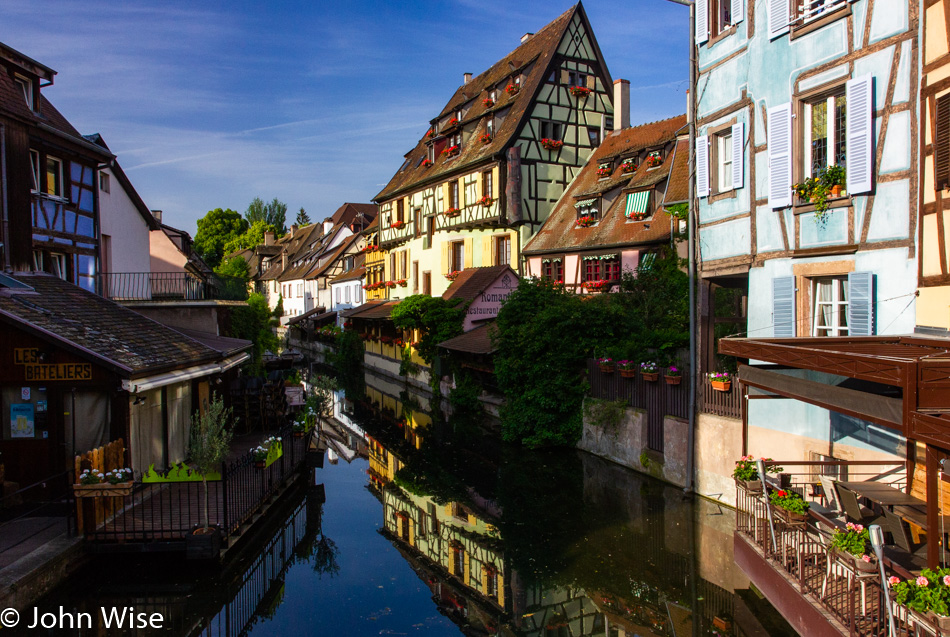
Just to my right, out of view, was an elderly Chinese man who, armed with his sketchbook, was drawing a pretty good rendition of this particular perspective. By now, you might start to understand why this area is also called “Little Venice.”
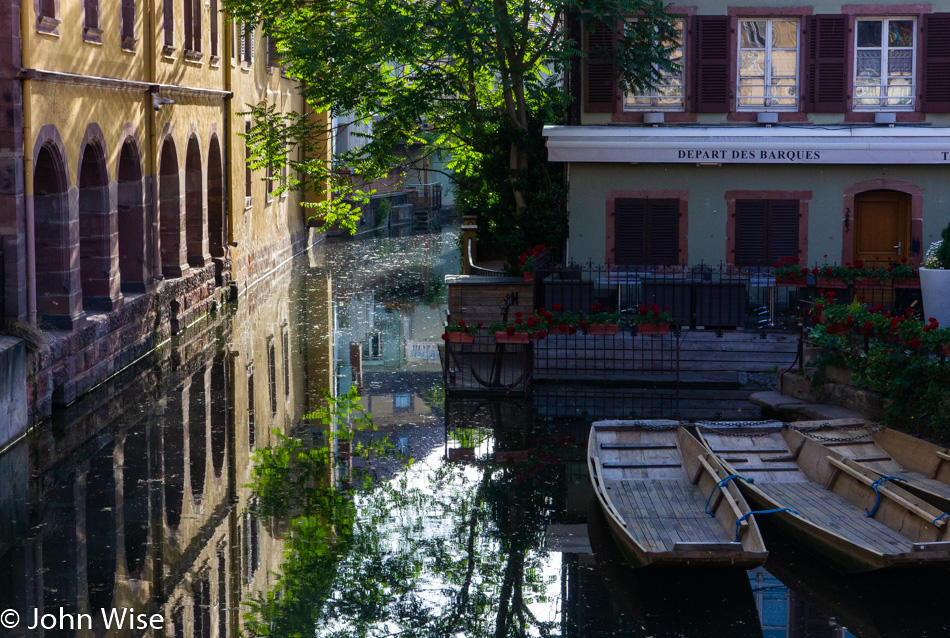
In a couple of hours, all of these places will be teaming with people and the village will once again have sprung back to life.
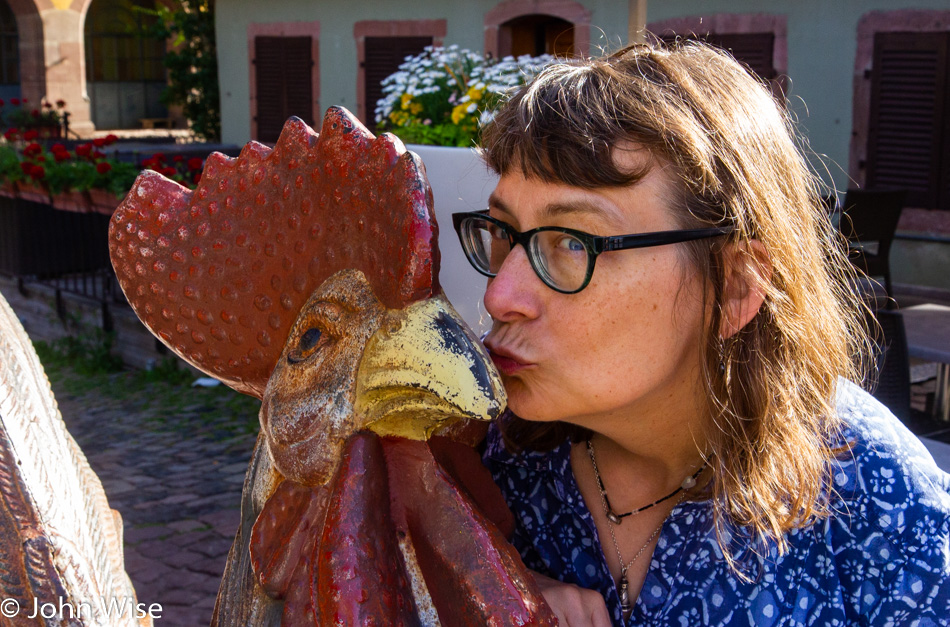
Just the tip.

One view might be much like the last, but because we walked these streets on such a gorgeous day and the place was ours, these images will allow us to study the details to see what we might have missed while we were walking through or just gaze into the scene as it was on this day allowing the impressions to take up permanent residence in our memories.
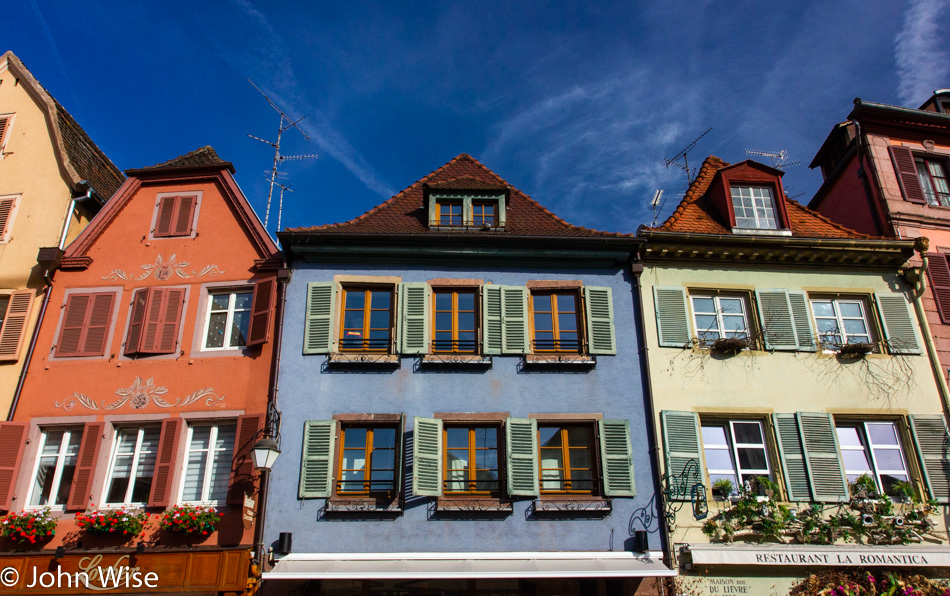
There could be considered one disadvantage to being up and out early: nothing is open yet. The bakeries are the first to open which is good because hunger walked out the door with us. What we are really waiting for is this:

I took better photos of St. Martin Church, but those didn’t include the stork and its nest in quite the same way. The importance of storks in the Alsace goes beyond the baby being born story and dates back to the year 817 and involves Louis the Pious, son of Charlemagne. If you’d like to read a very short history of that story, check out this blog.
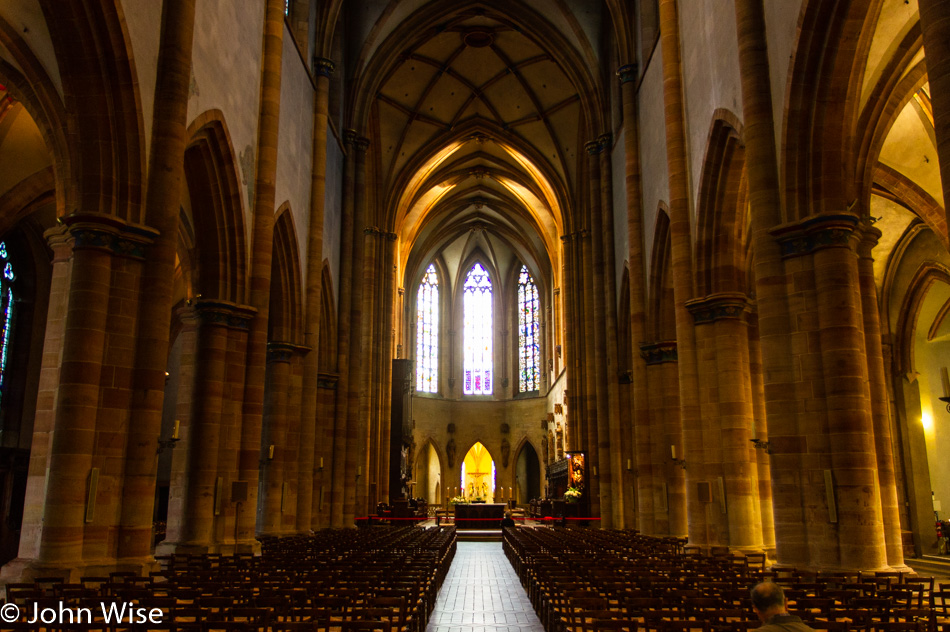
Construction began back in 1234 and wasn’t completed until 1365. The idea that more than a few generations of craftsmen spread out over 131 years would work on this with those who began never seeing their work finished is a strange thought. If I were a betting person, I’d wager that it could be every day and on some of those days, multiple times a day, that we visit a church or cathedral.
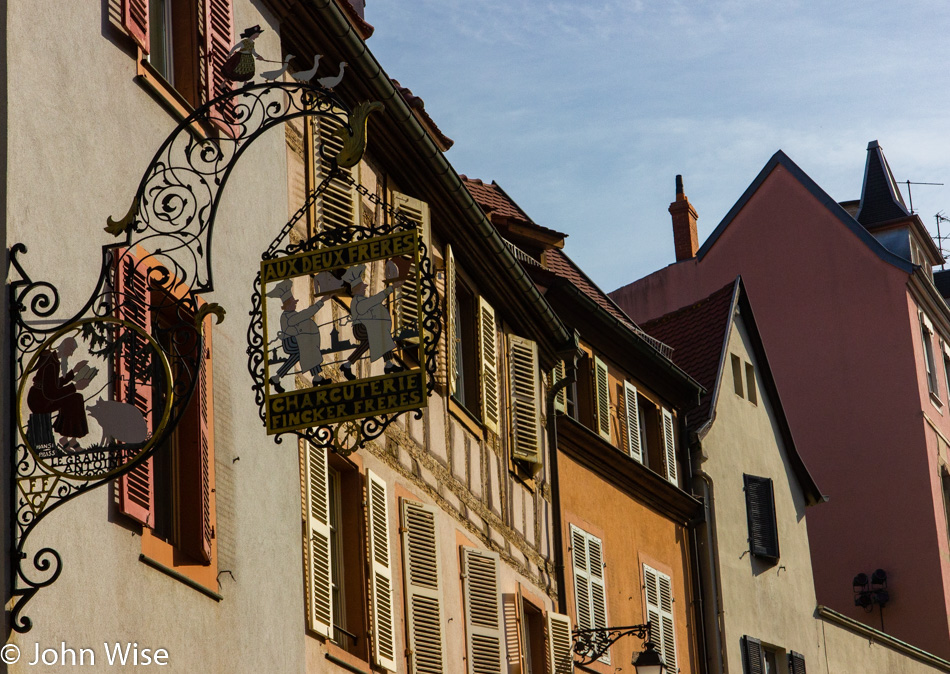
At least there are a few places left that haven’t gone over to red plastic and neon for their signage. Aux Deux Freres is “Two Brothers,” and Charcuterie translates to cooked or prepared meats.

Last night, the streets were teeming with visitors enjoying the early summer weather. With the shadows still long but shortening quickly, it won’t be long before, once again, the din of the village will be at a low roar.

With things still in this idyllic moment, we decided to was okay to leave as we have one of the two longest drives on this trip ahead of us today.
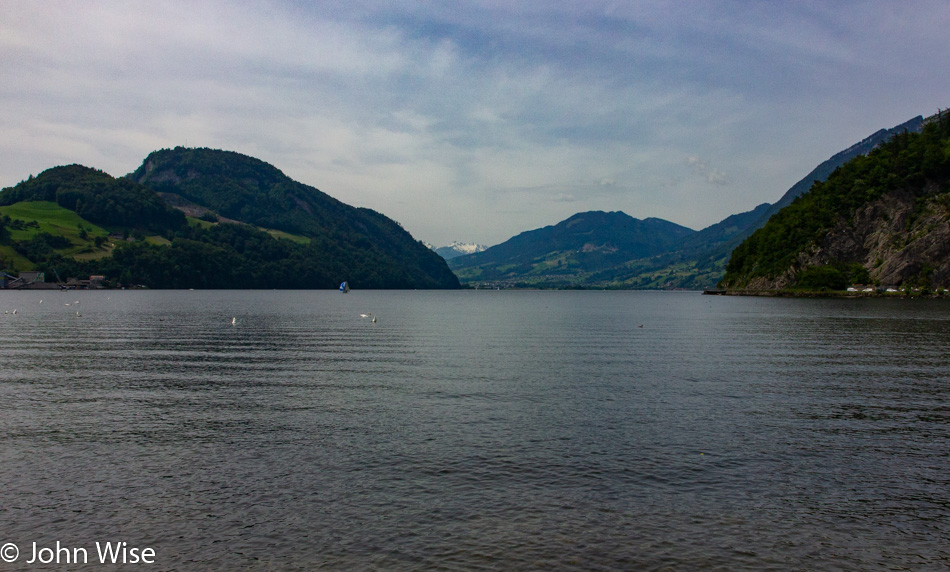
After the “long” drive from Colmar to Basel and then Lucerne, we were ready to enter the Alps in earnest.
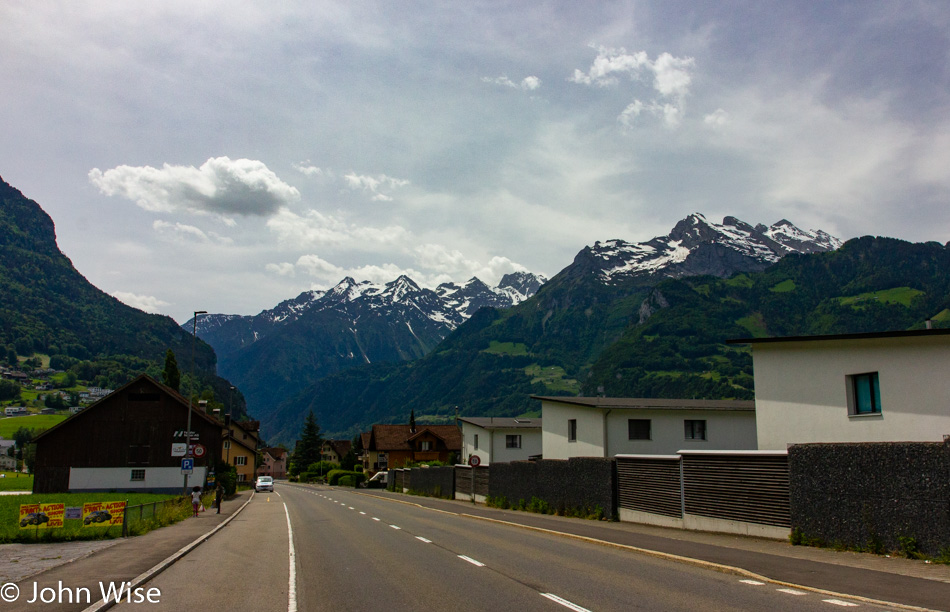
Caroline, by now, has already commented on how “Swiss” everything looks half a dozen times. We are blown away to have the weather cooperating with us, as we have been trying our best to prepare ourselves for the fact that we may not see any peaks up here due to cloud cover.
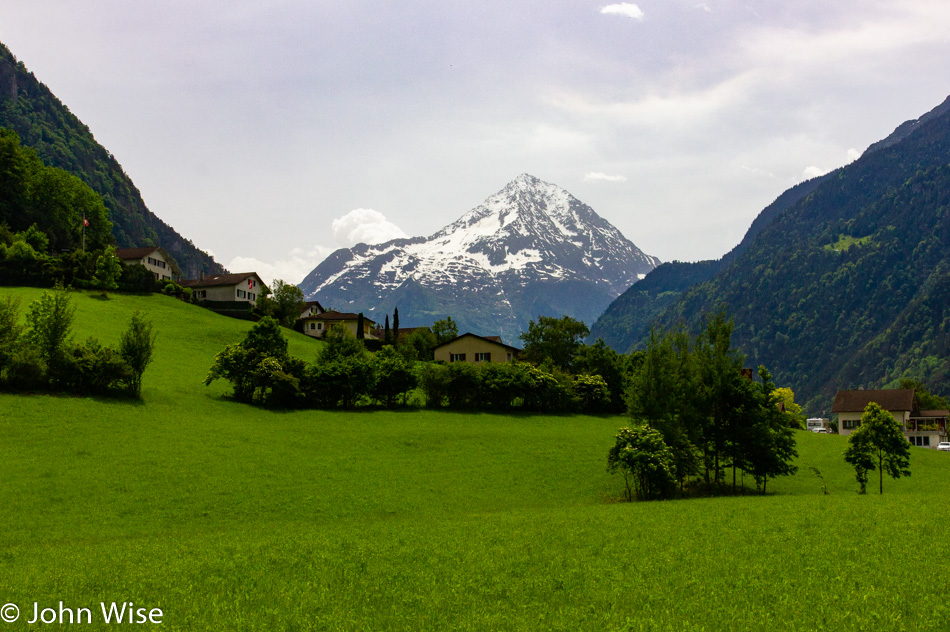
While I never got a photo of it, we were impressed with how many people still harvest hay on the side of the mountains using hand tools.
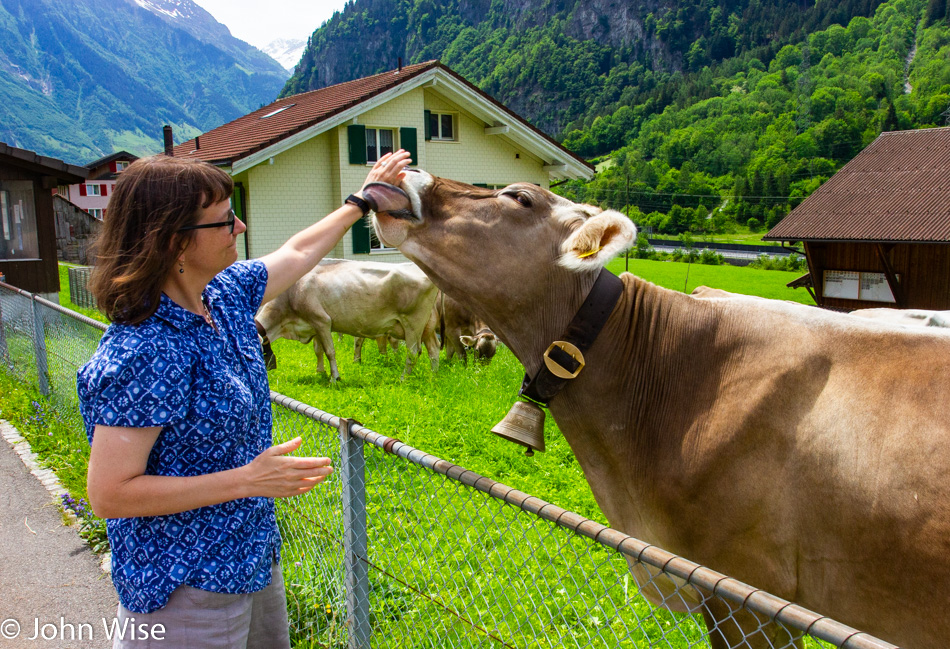
Every one of the cows in this roadside pasture wore a bell, and the chorus of the two dozen or more bells clanging in the mountains was a terrifically beautiful sound we will never forget, especially because I recorded the Cow Concert and will post it here after I return to the States. By the time this friendly cow was done with Caroline’s arms, she had scratch marks all over them from that tough old tongue.
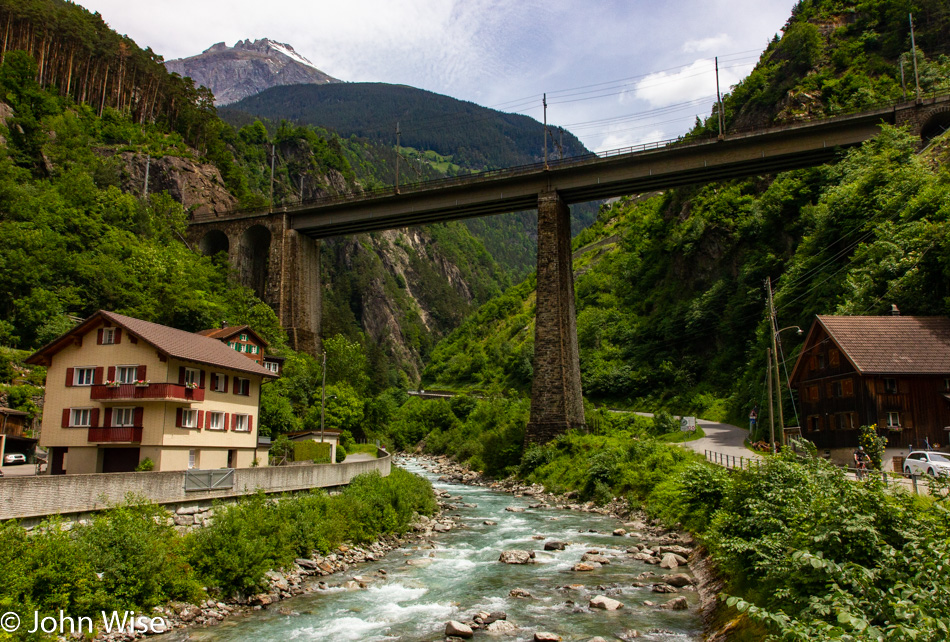
We couldn’t believe the outrageous intensity of the landscape either; the only thing missing was the time that would be required to meander up these anonymous roads and find the hidden trails to go hiking so that instead of only seeing the obvious sights, we could find the hidden ones too.
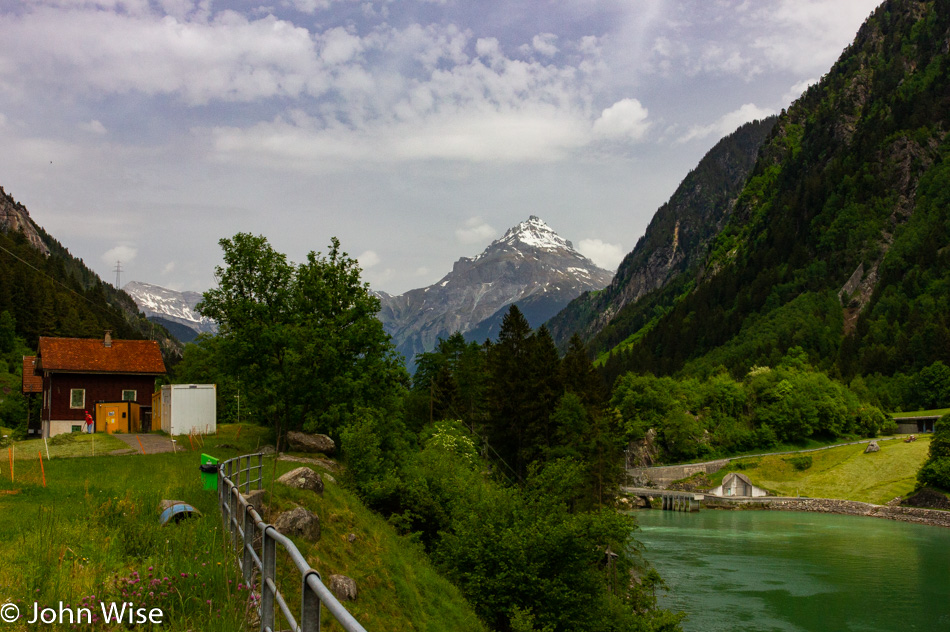
I should point out that we are not on the main road here as there is a series of tunnels and freeways that were built that allow the heaviest traffic and trucks to make better time through this stretch of Alps; we chose the scenic path.

Tunnels bored under the mountains allow for a straighter, less difficult drive, but who’d want to miss this?
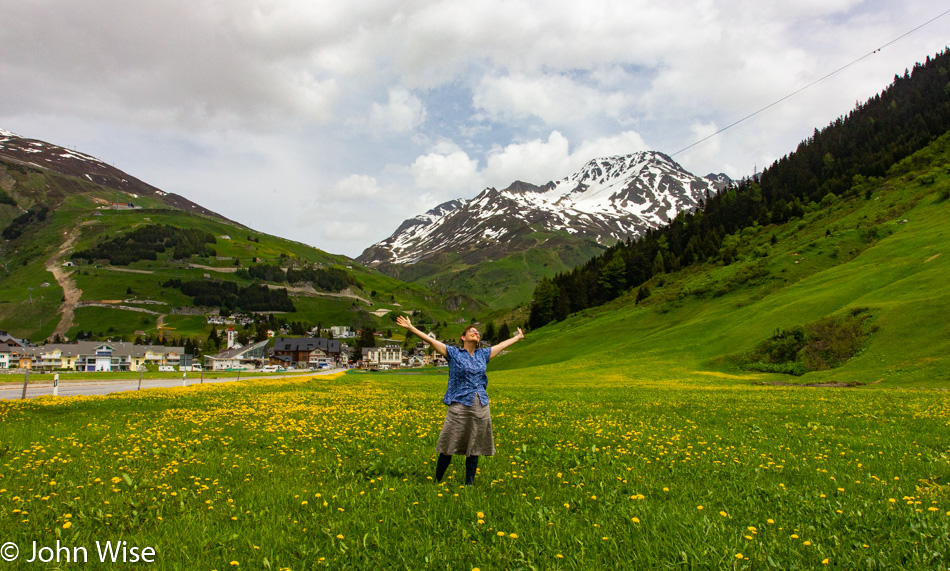
You had to know that Caroline is nerdy enough to reenact a Sound of Music moment here in the Alps, right?

Defacing the Alps with snow graffiti because she just doesn’t care.
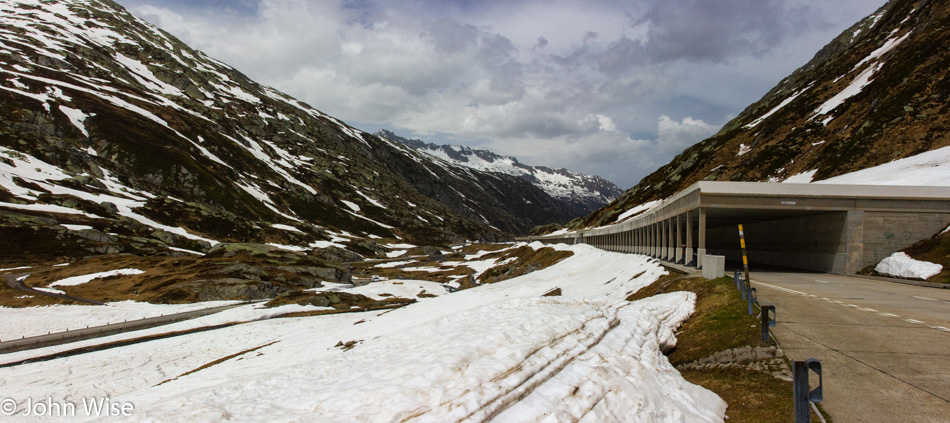
Approaching the summit of the road on Gotthard Pass. Below us is a 10.5-mile (17km) long tunnel, allowing the trucks and those in a hurry to move quickly while we linger and take in the sights. Well below them, close to the base of the mountain, is the world’s longest rail tunnel at 35.5 miles long (57km).
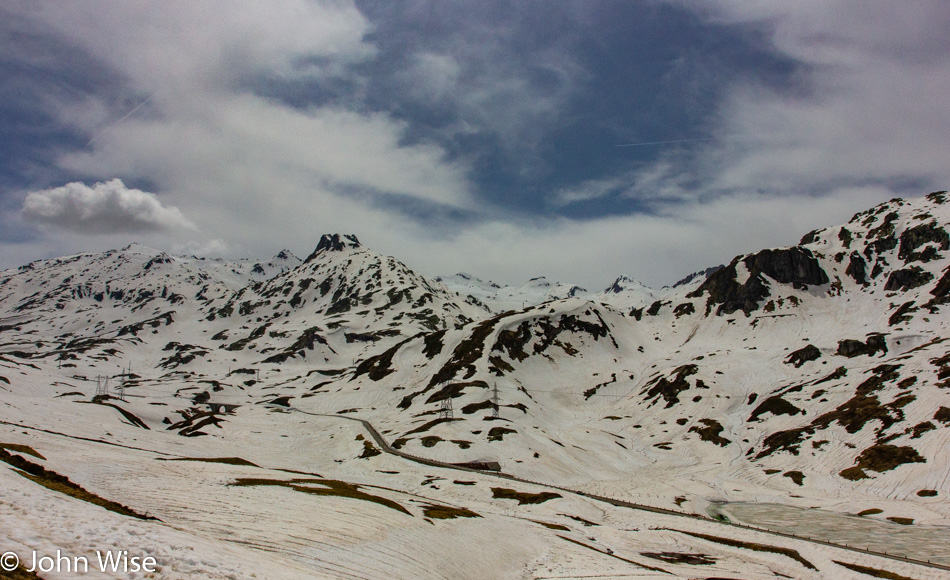
Year-round, the snowpack and glaciers throughout the Alps make for some of the greatest scenic drives on Earth. This particular section of the Alps is known as the Lepontine Alps.

About to start our descent toward Italy.
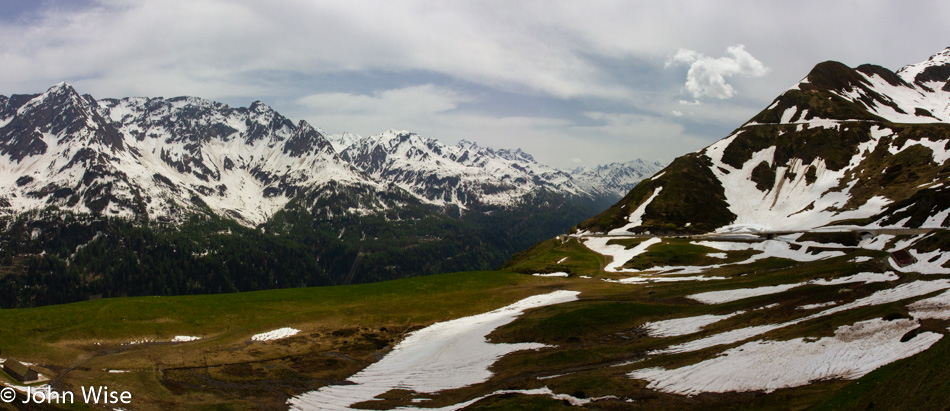
This was the view from near the highest point on our road today and is adjacent to the spot where I took the image looking down the mountains. There is also a souvenir and cafe up here, along with a WC also known as a water closet or toilet.
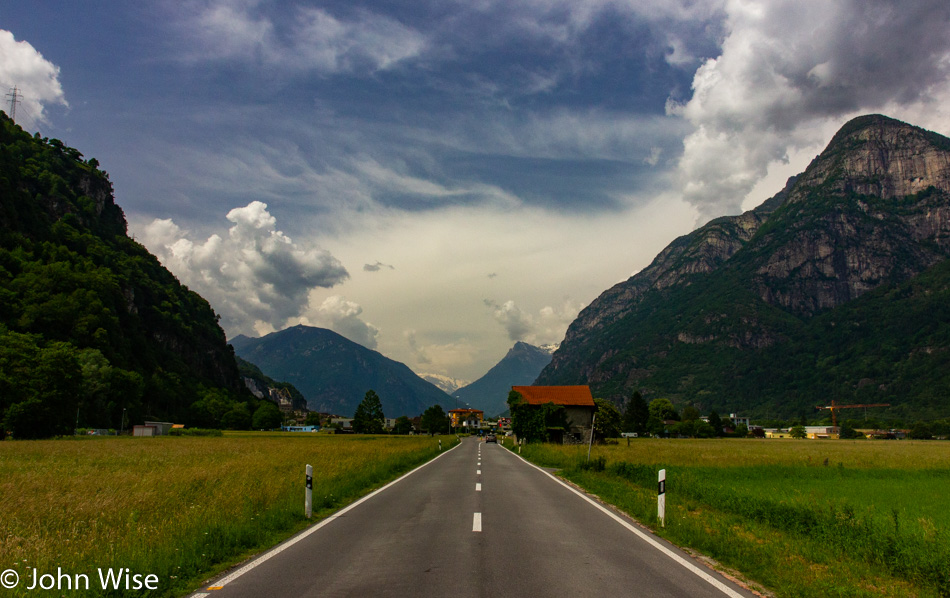
One last look back from where we just drove through.
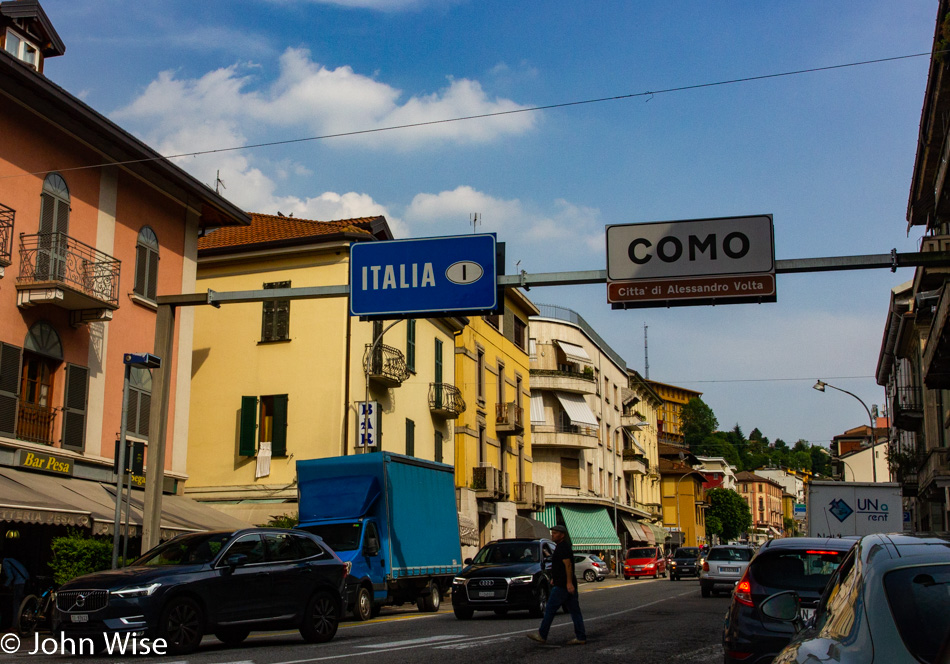
And then, all of a sudden, we were on narrower, crowded streets with people yelling at us that we couldn’t stop anywhere. From the idyllic to mayhem in less than 10 miles.
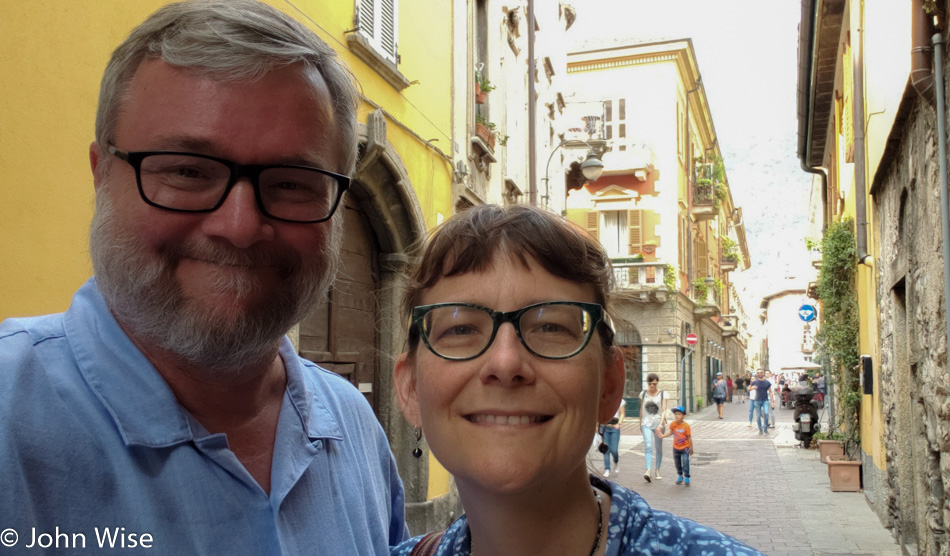
We look pretty good for what we just endured. We made a mistake and drove right past the sign that said in Italian that these narrow streets that were far narrower than anything else I’d ever driven on in my life, were only for locals. Our apartment for the night was down one of these passages and so we kind of felt that made us temporary local residents: wrong! If you notice that the lighting on our selfies is different on this trip, it’s because I’m using my phone to shoot these due to the lens on my DSLR having a broken auto-focus. During the course of our trip, my 10-year-old Canon would see different electronic malfunctions, and the zoom on my lens would break, forcing me to manually pull on the barrel of the lens to jam it back into a wide angle.
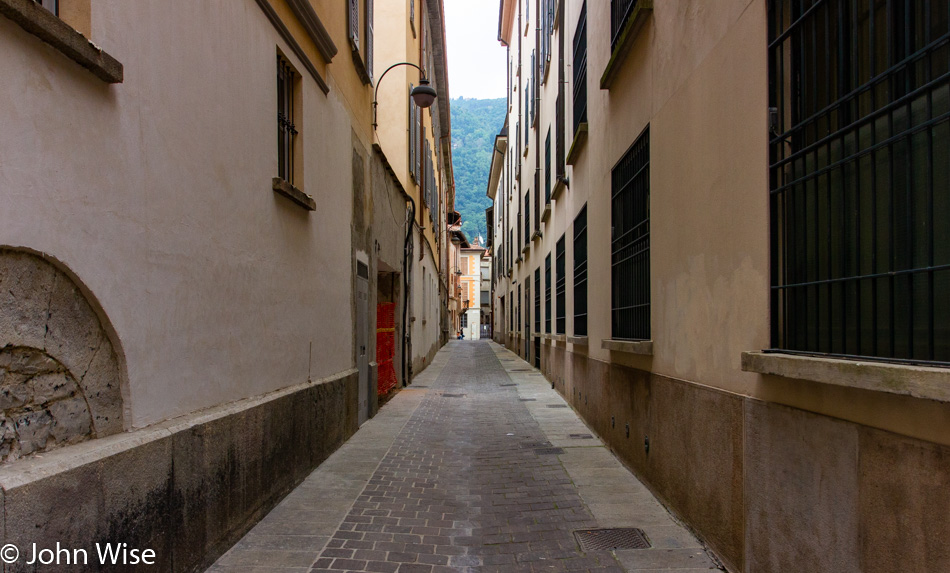
This is indicative of the passage we drove down. Should you think it looks wide enough, our side-view mirrors were at times only inches away from buildings, tourists, and other cars.

Walking to dinner because a short two-mile (3.4km) walk up the hillside might offer up some nice views.
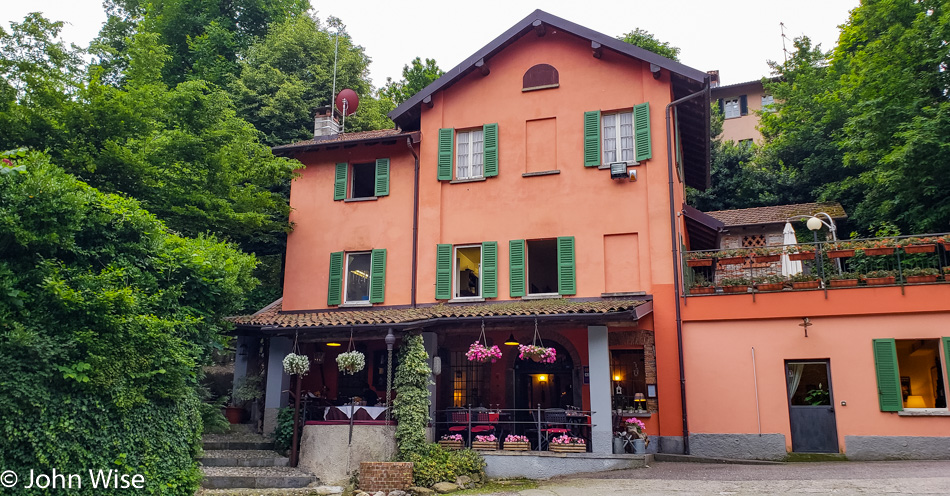
This is Crotto del Sergente Osteria in Como; well, actually, it’s out in the woods in a secluded corner away from traffic. It’s the perfect setting for our first-ever meal in Italy. I chose this while we were back in the States so I could avoid wasting time debating different places while we were starving on the streets of Como. This restaurant is known for its slow food.
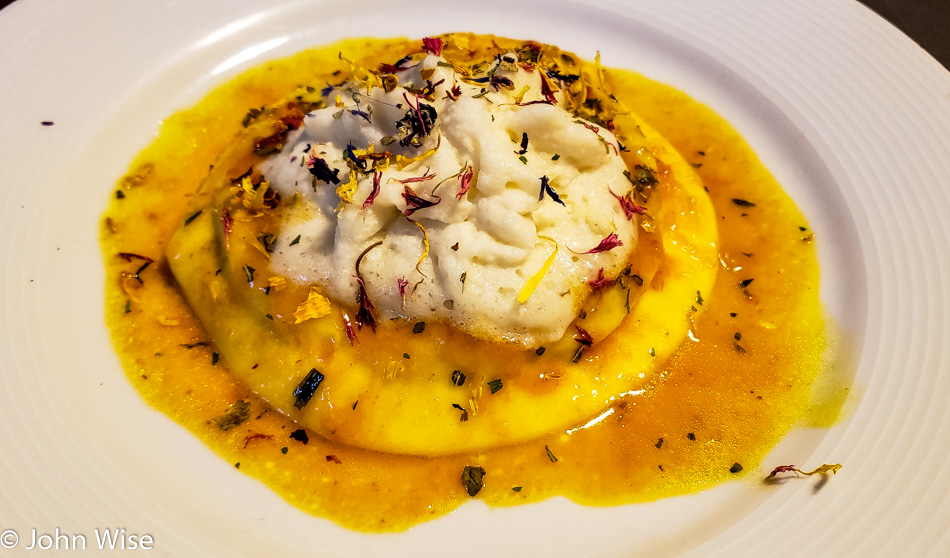
I won’t task you will all the photos I shot of our dinner, but I offer you these two. This was one of our warm first courses and is Raviolone all’Osibuco of Veal with Saffron of Faloppio, Soft Marrow, and Horseradish.
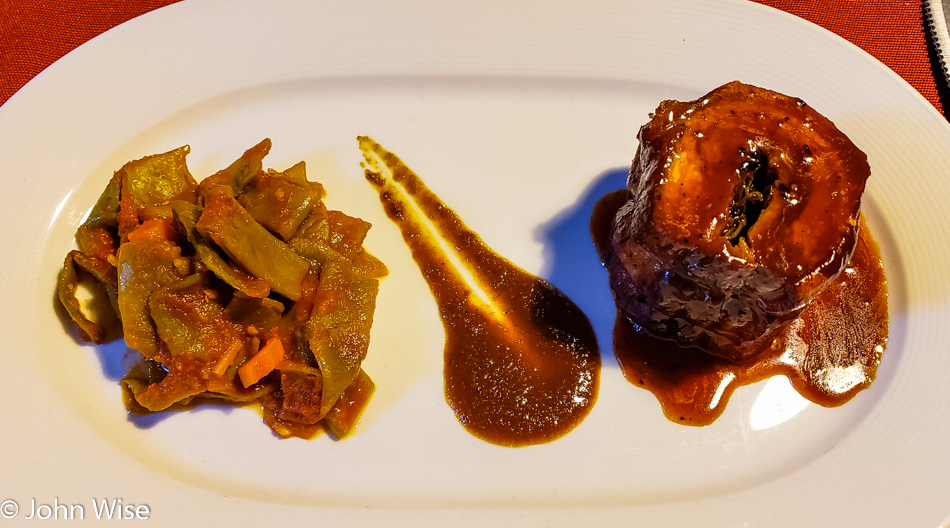
My second course was this Porchetta del Crotto with Ginger Sauce and Piattoni (beans).
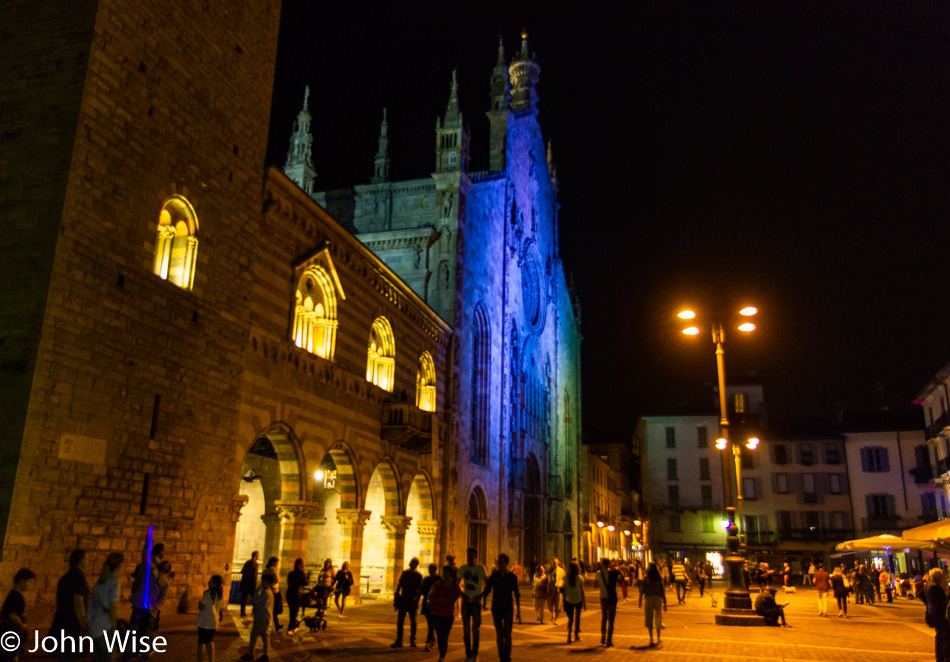
We took a taxi back to town as not only was it dark when we finished dinner, but what I didn’t show you about our walk up a twisting, winding road was how often there was no sidewalk and how we hugged the edge of the road just half a meter away from vehicles speeding right by us. We can’t tell you what time Como goes to sleep because at 11:00 p.m., there were still thousands out on the street; matter of fact, over in front of the lake, there was a public Zumba class with hundreds of people dancing along. This photo is not indicative of the number of people out, as there’s hardly anyone here.

Walking back to our apartment around midnight we have covered 9.5 miles by foot today (15 km) and climbed 40 floors.
